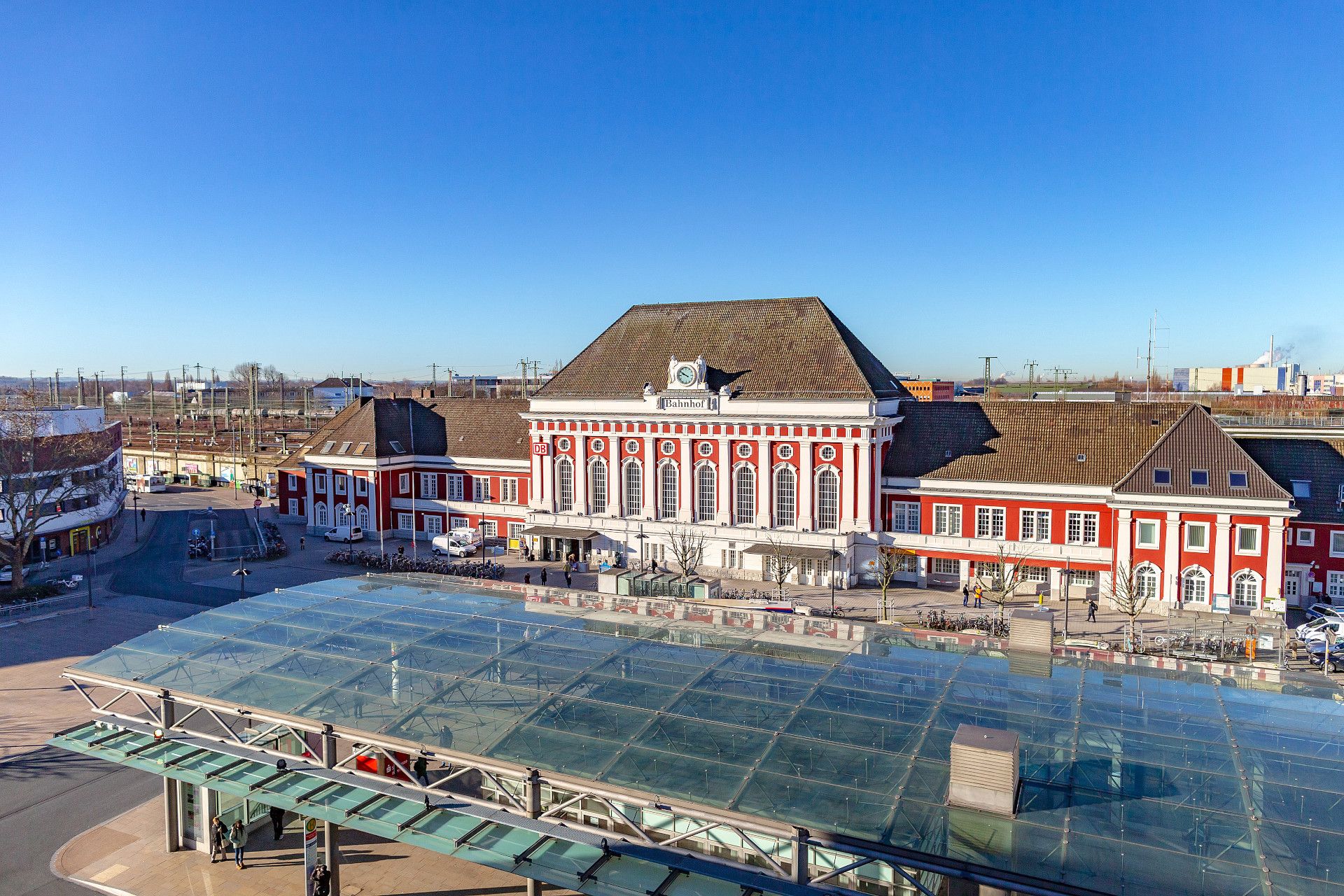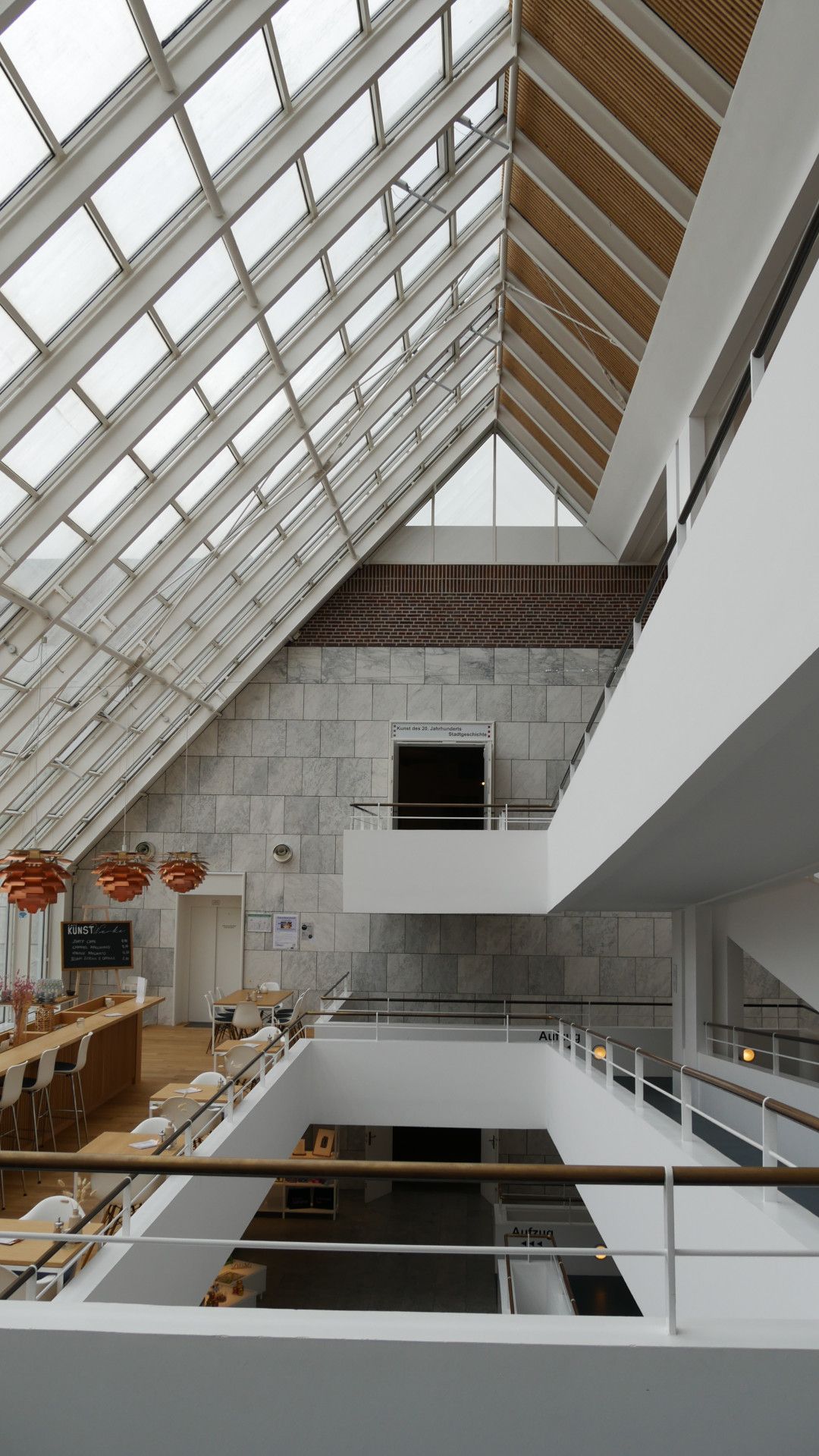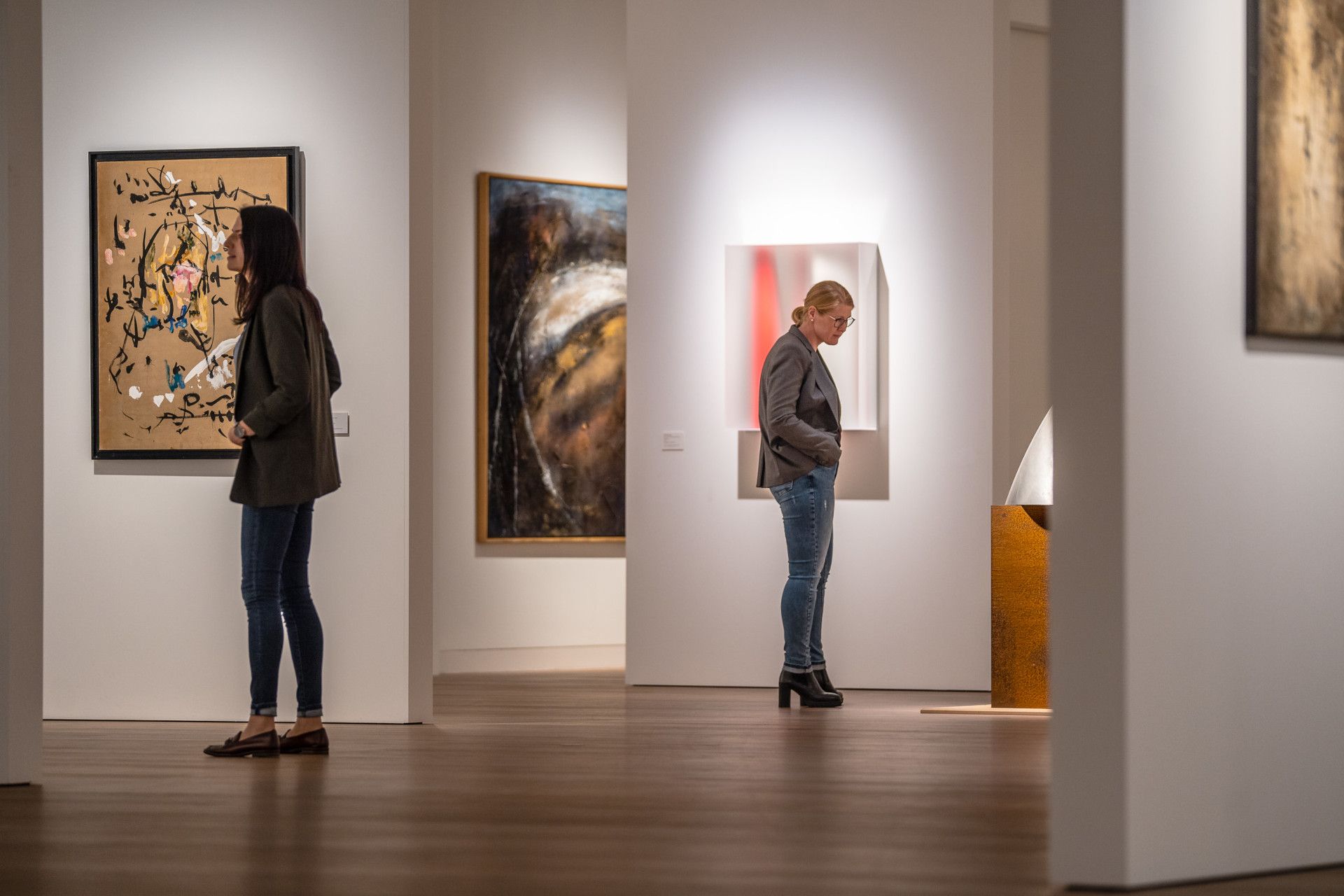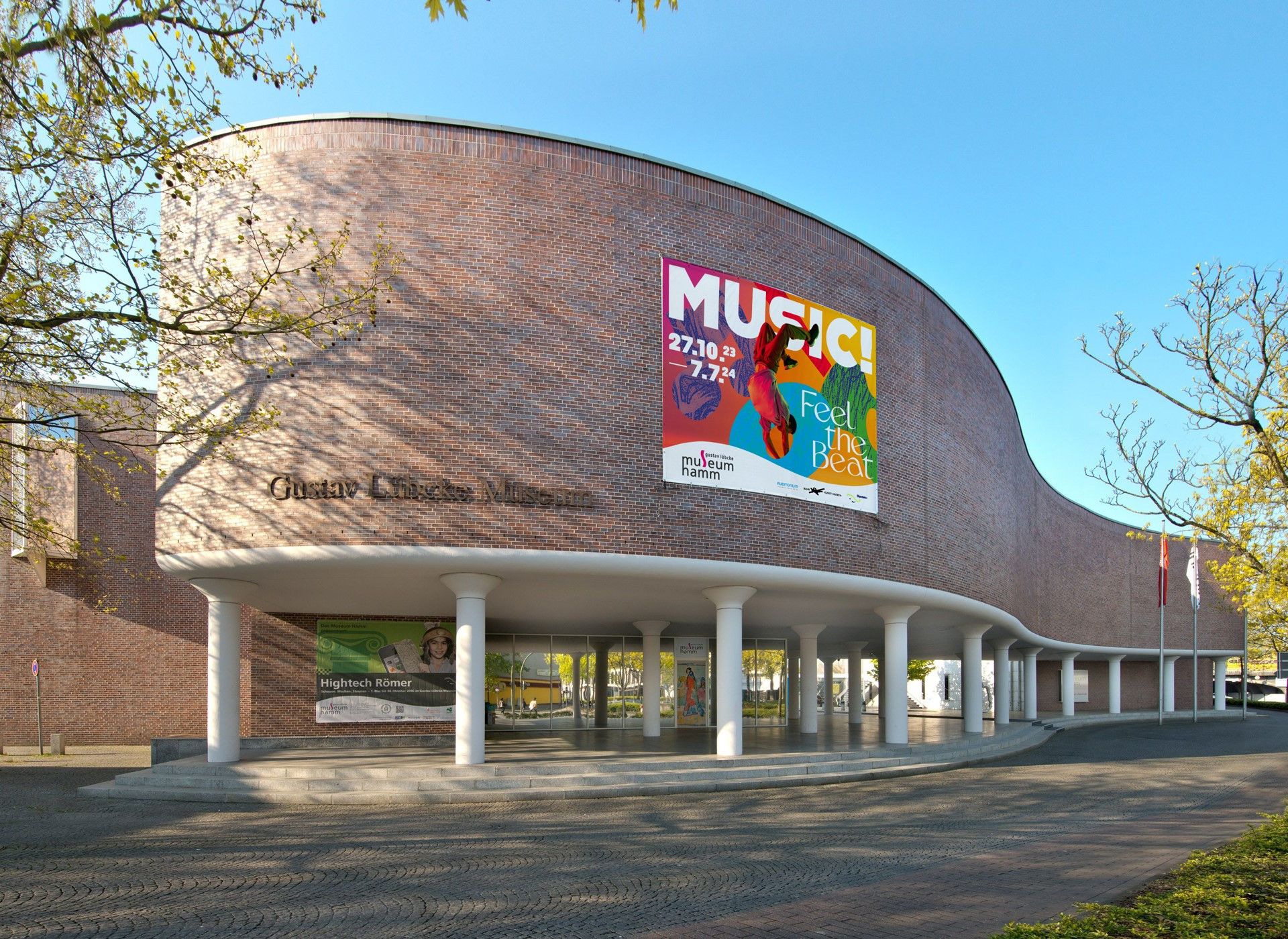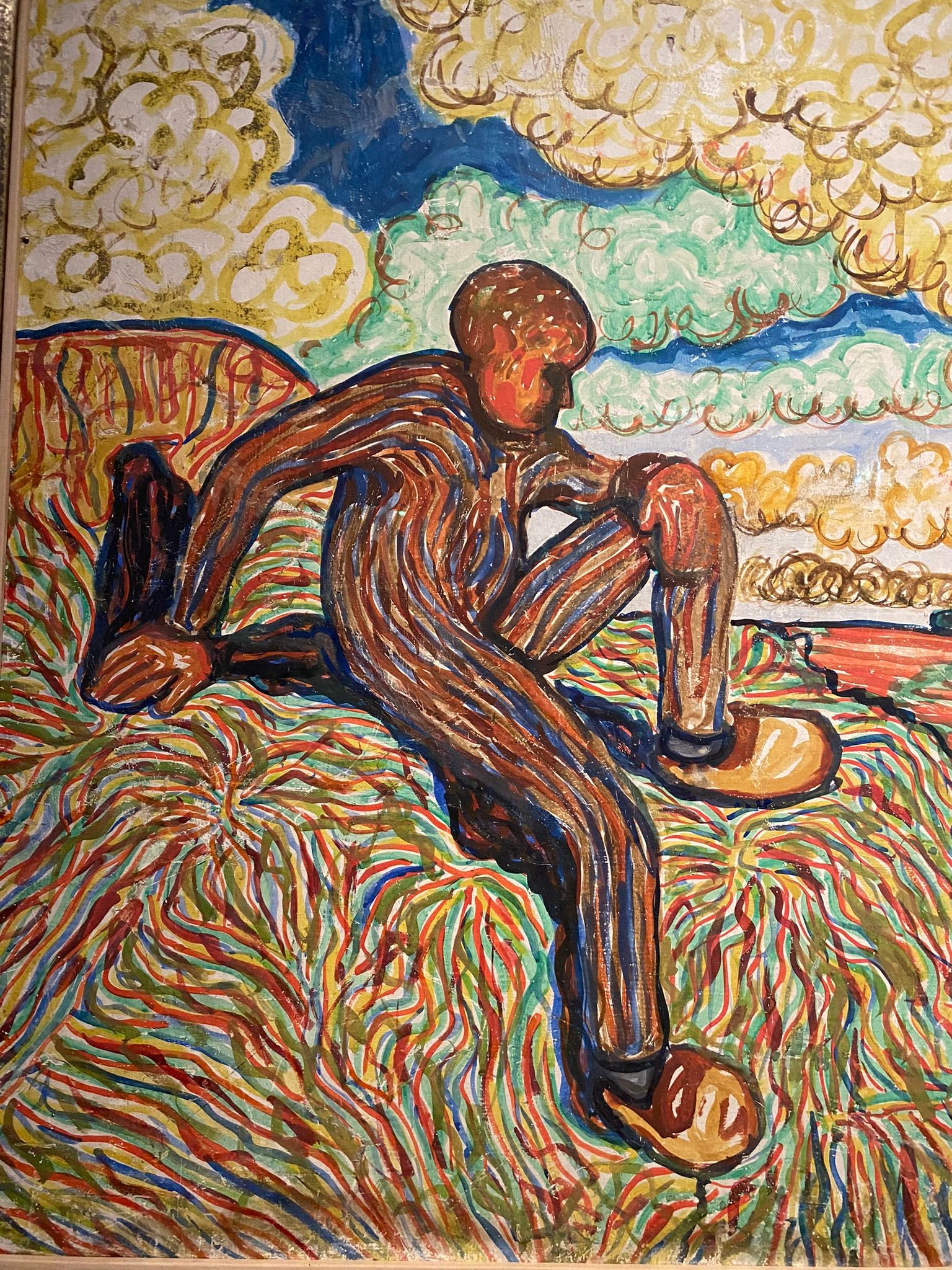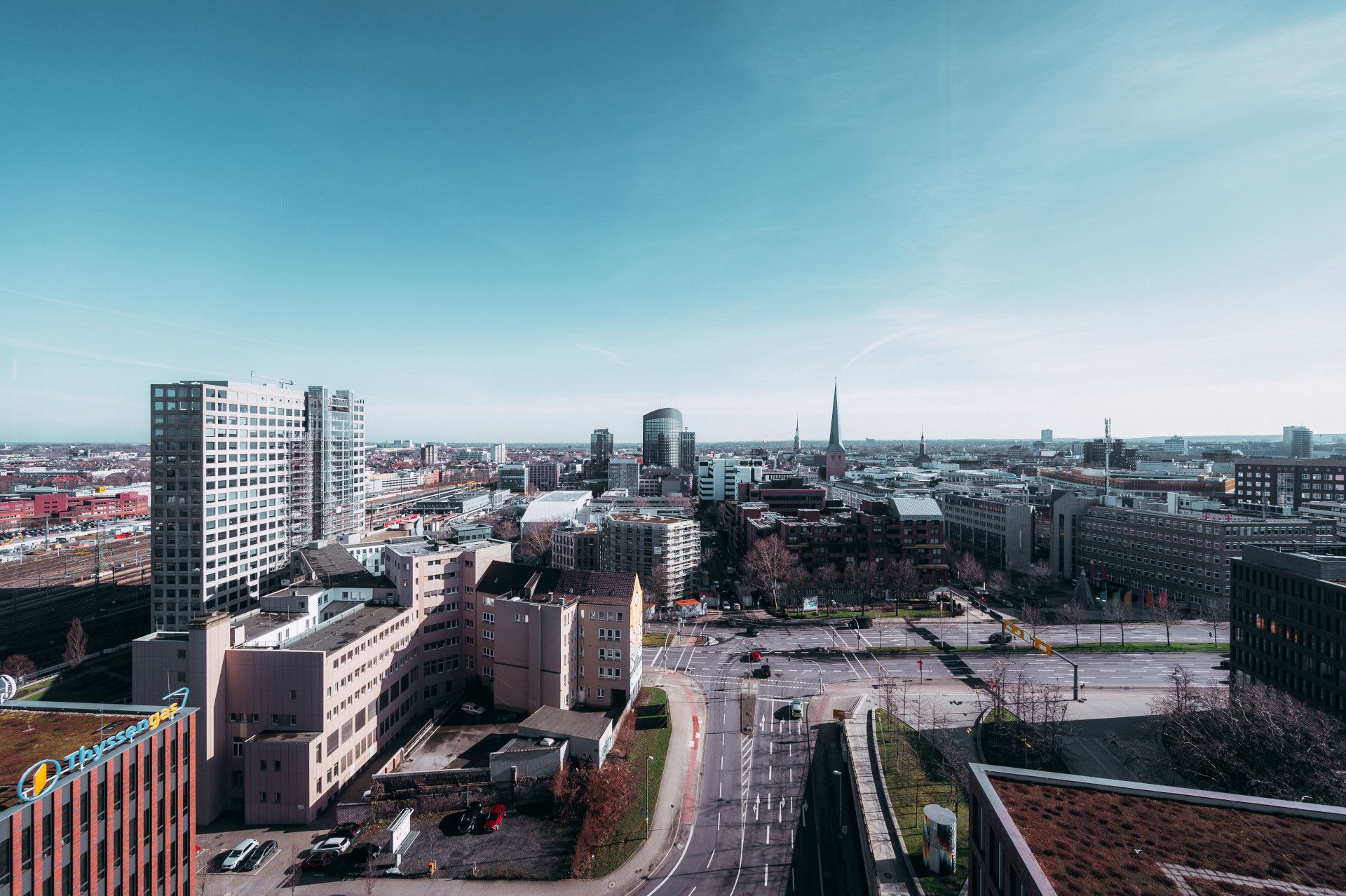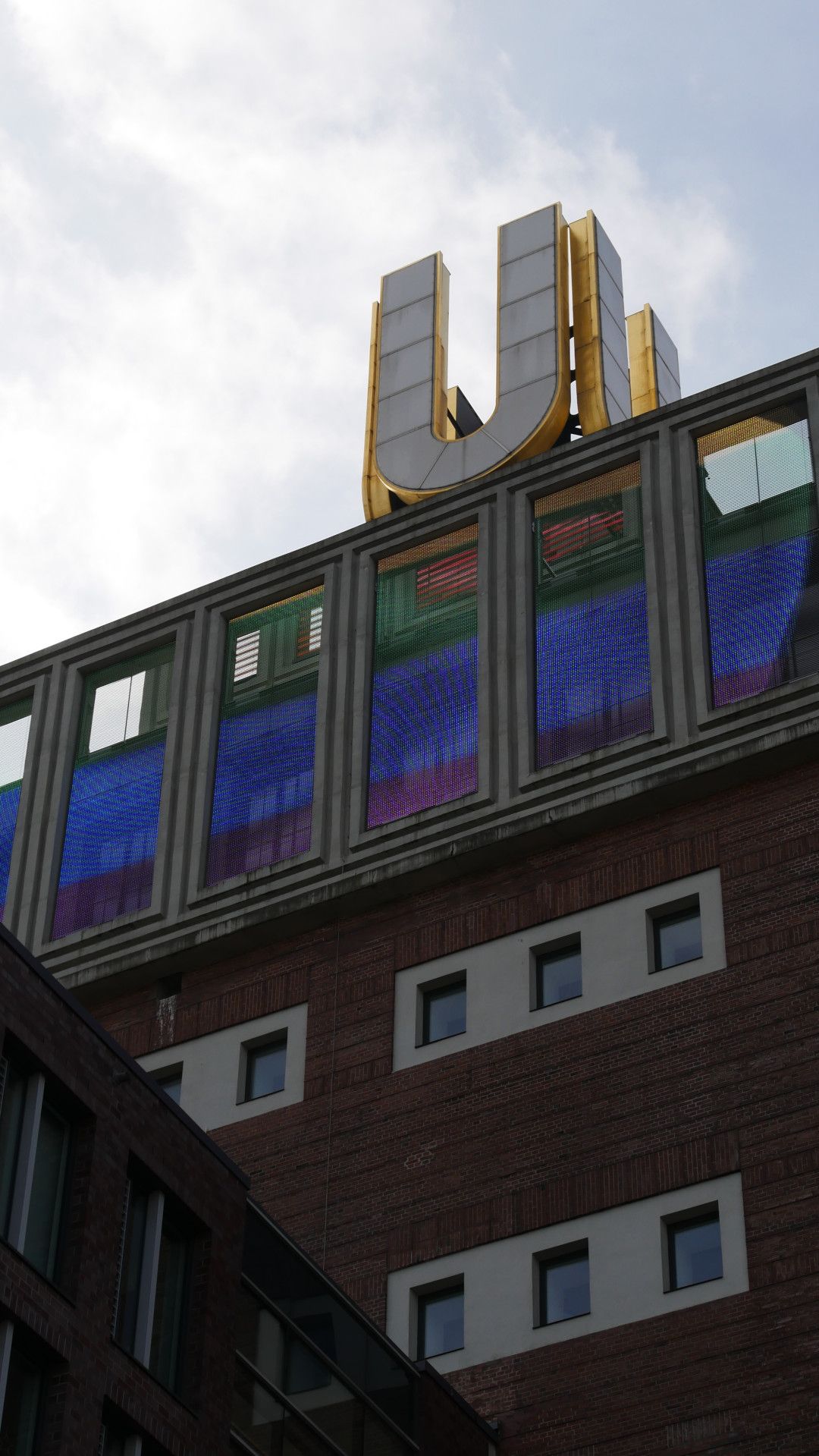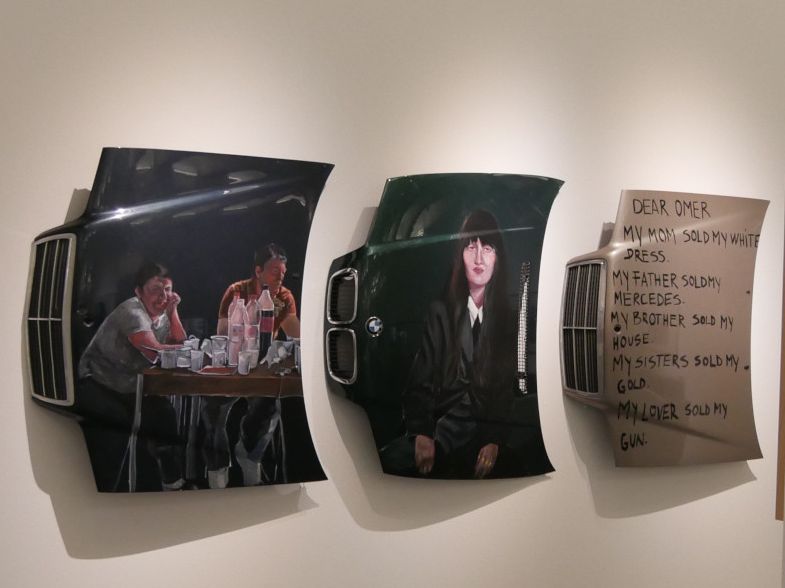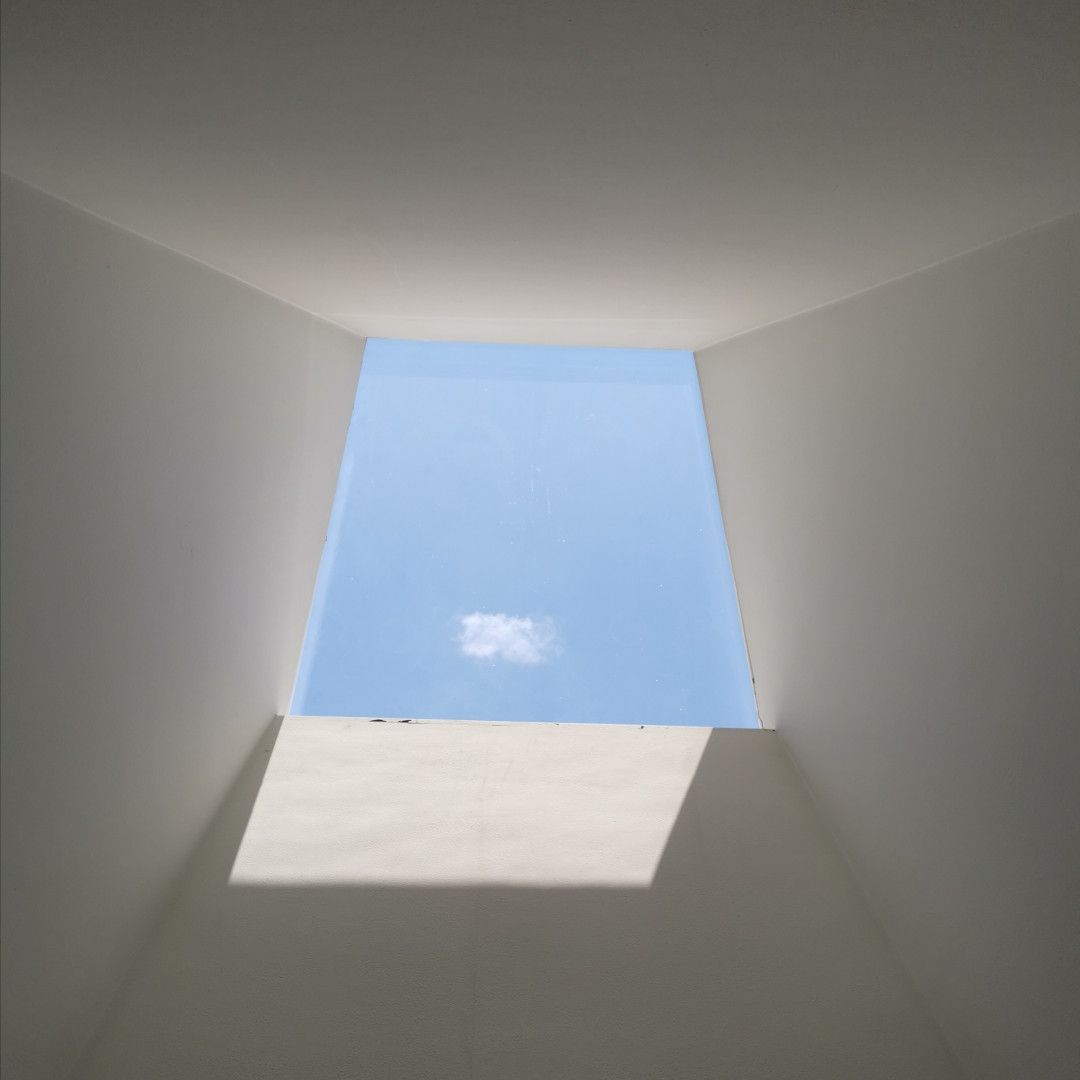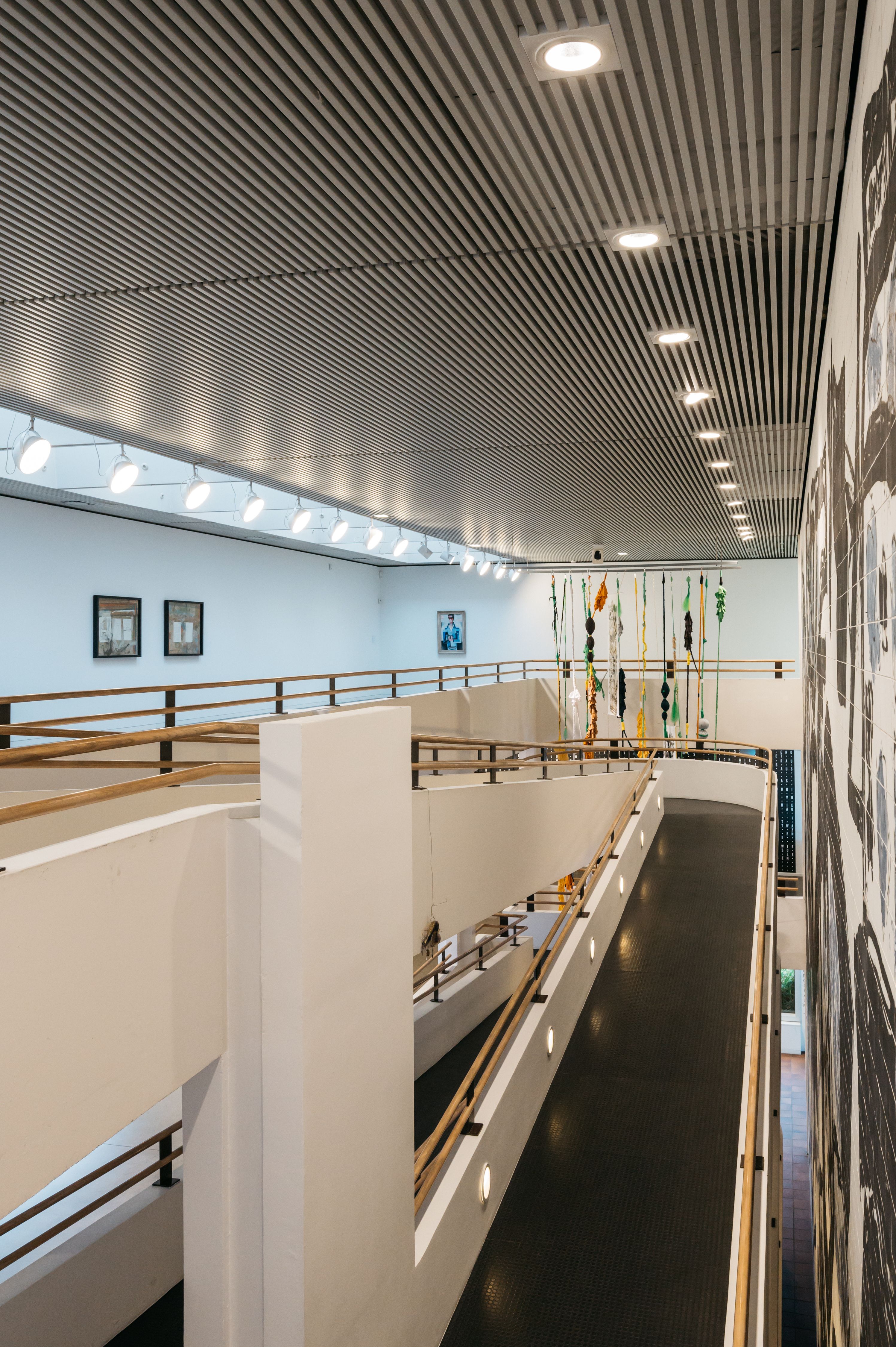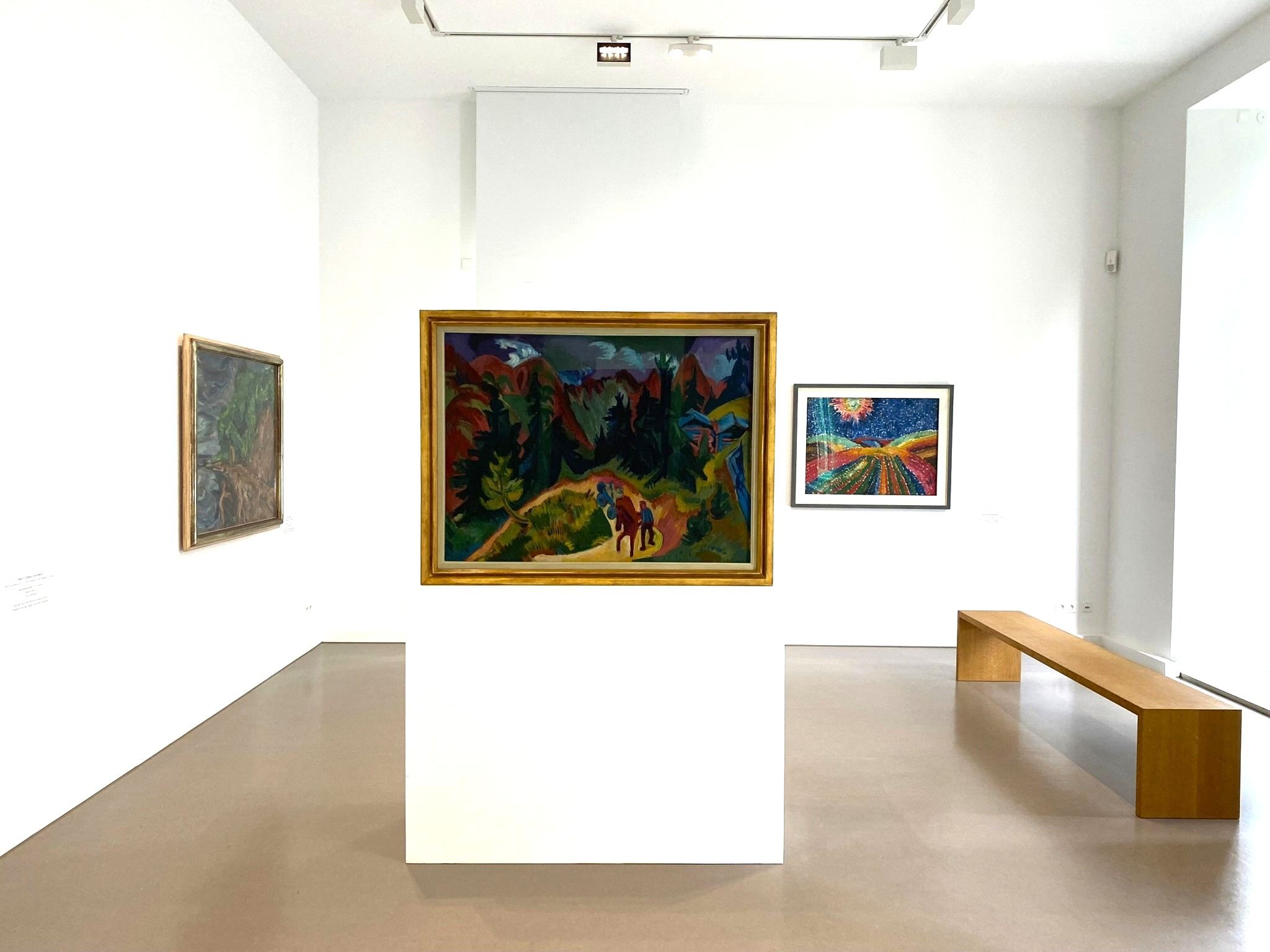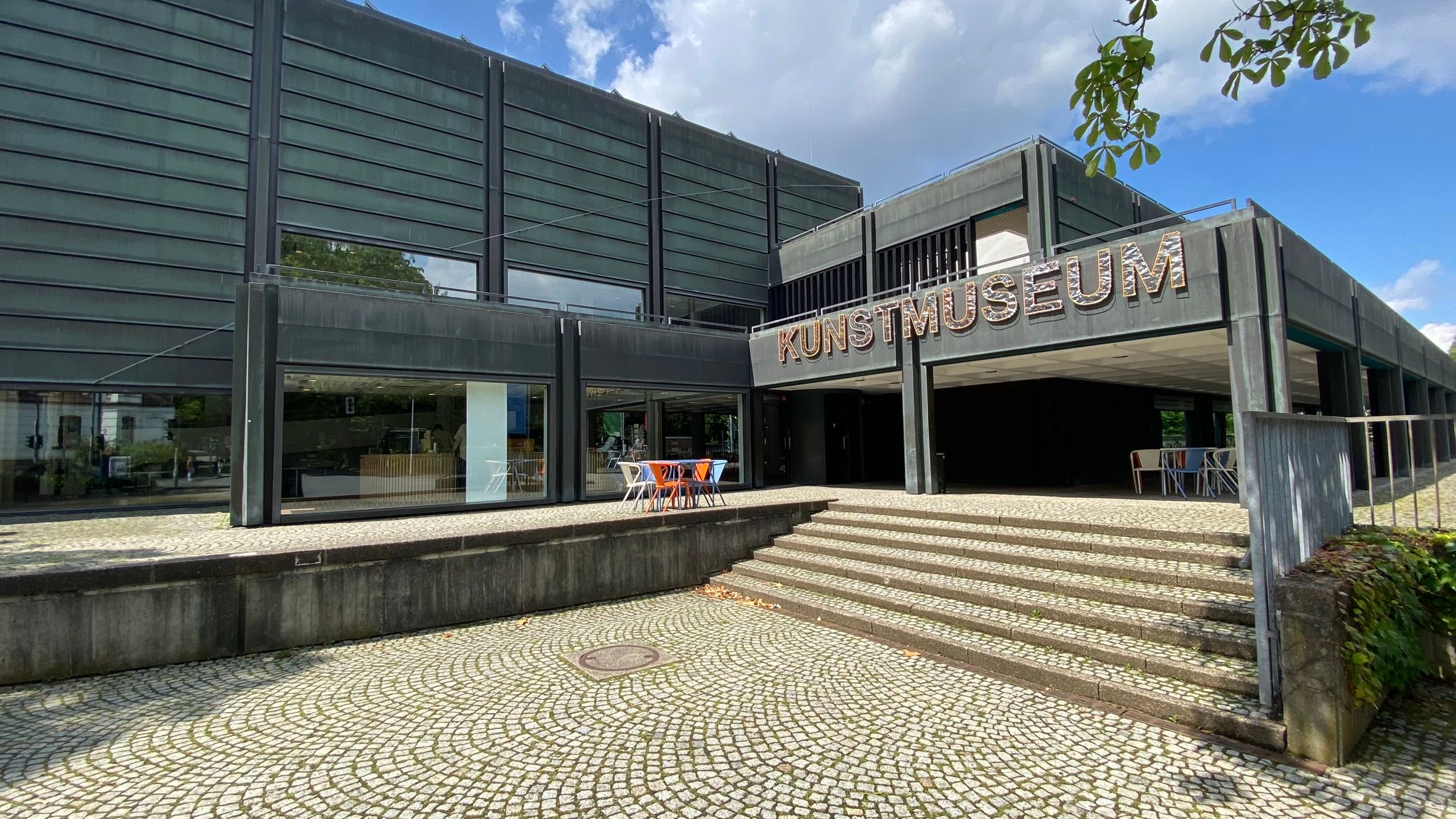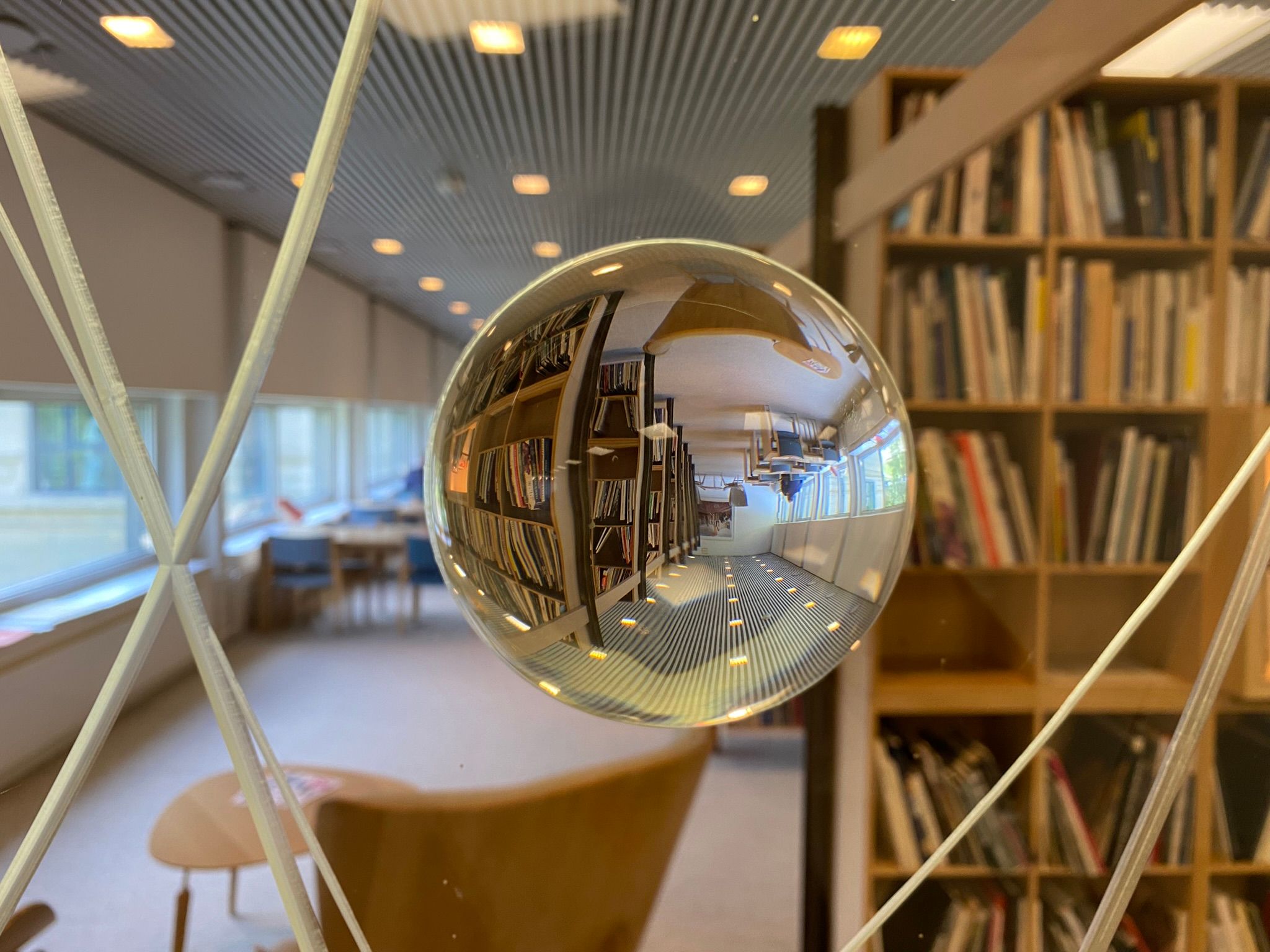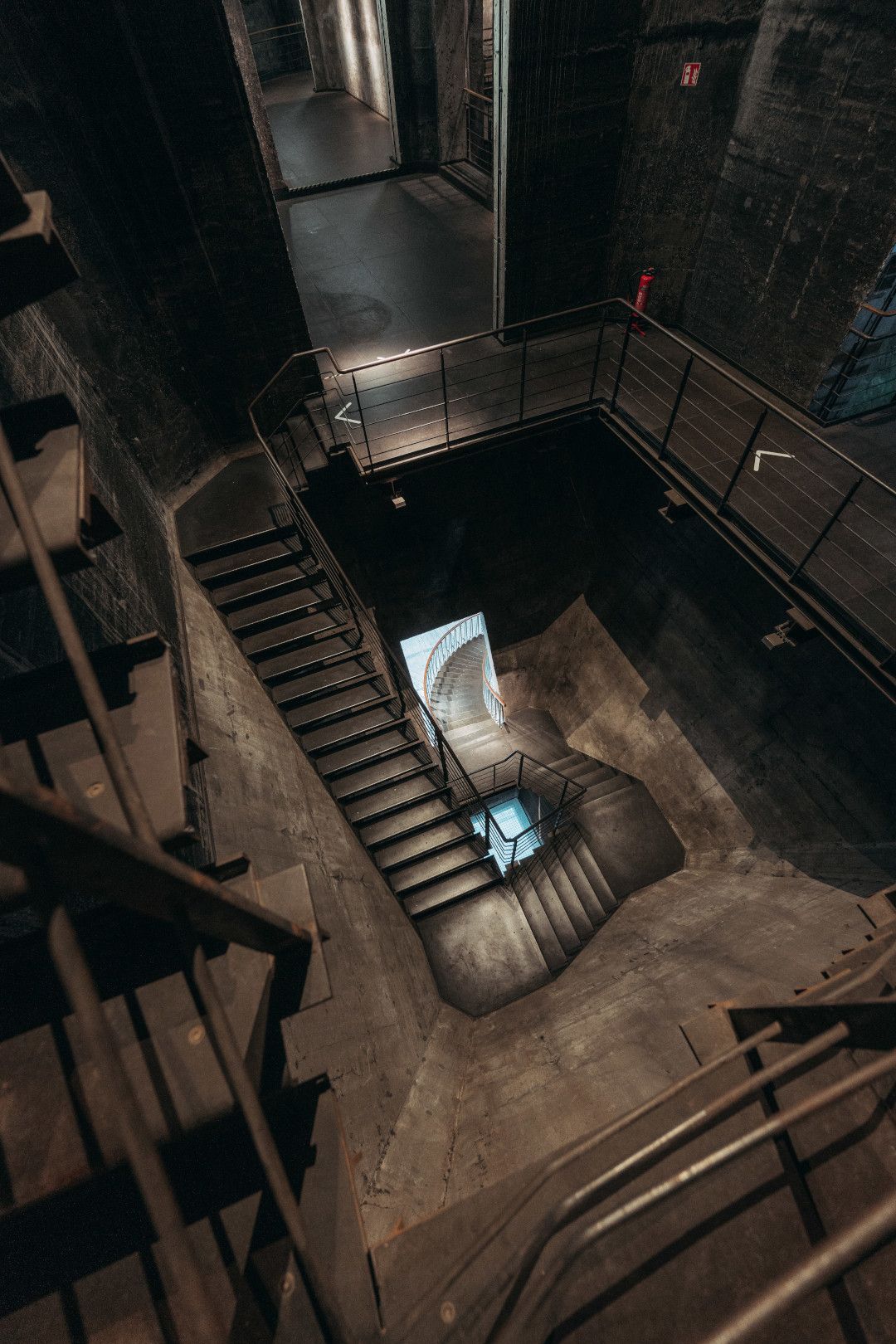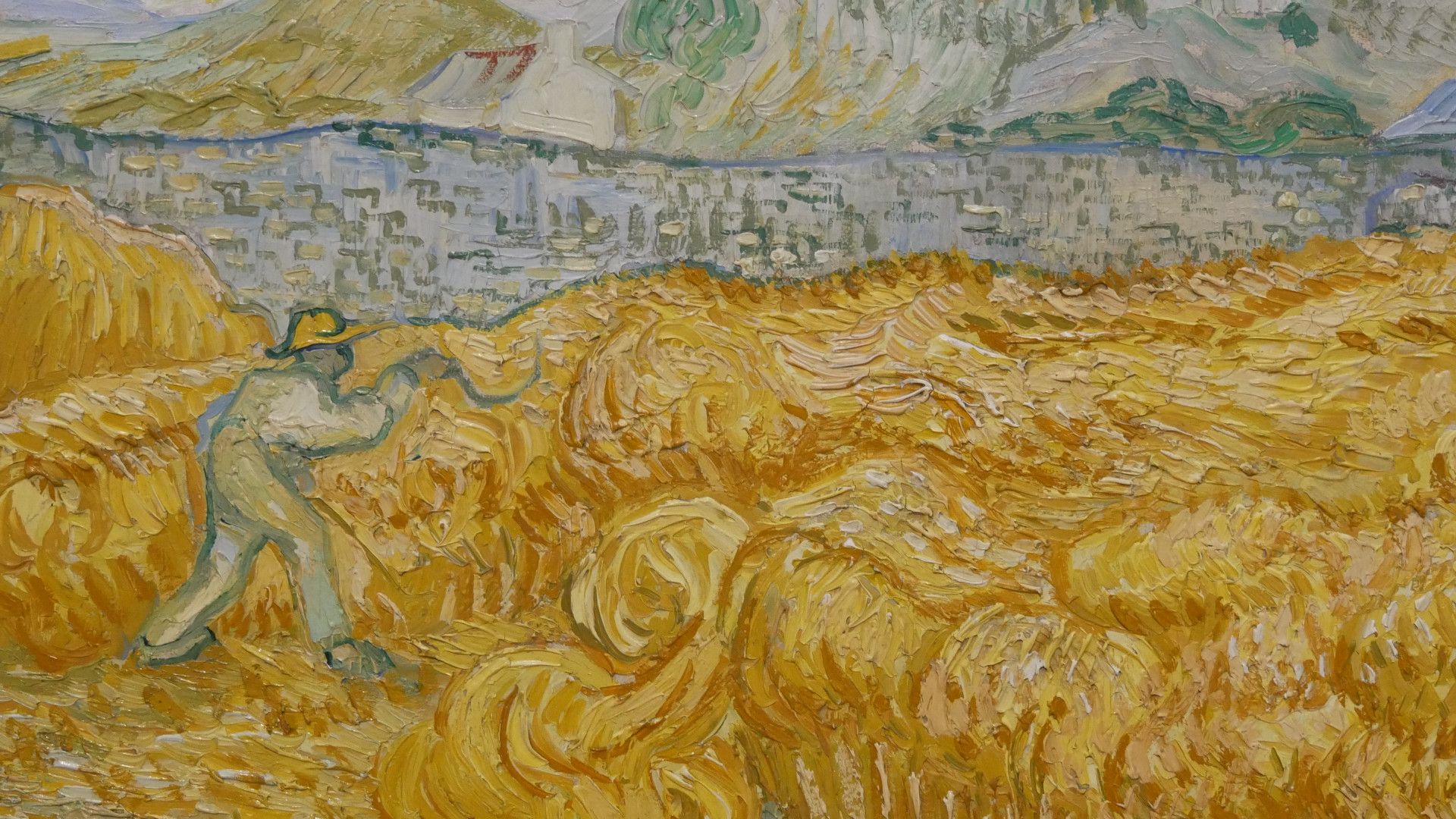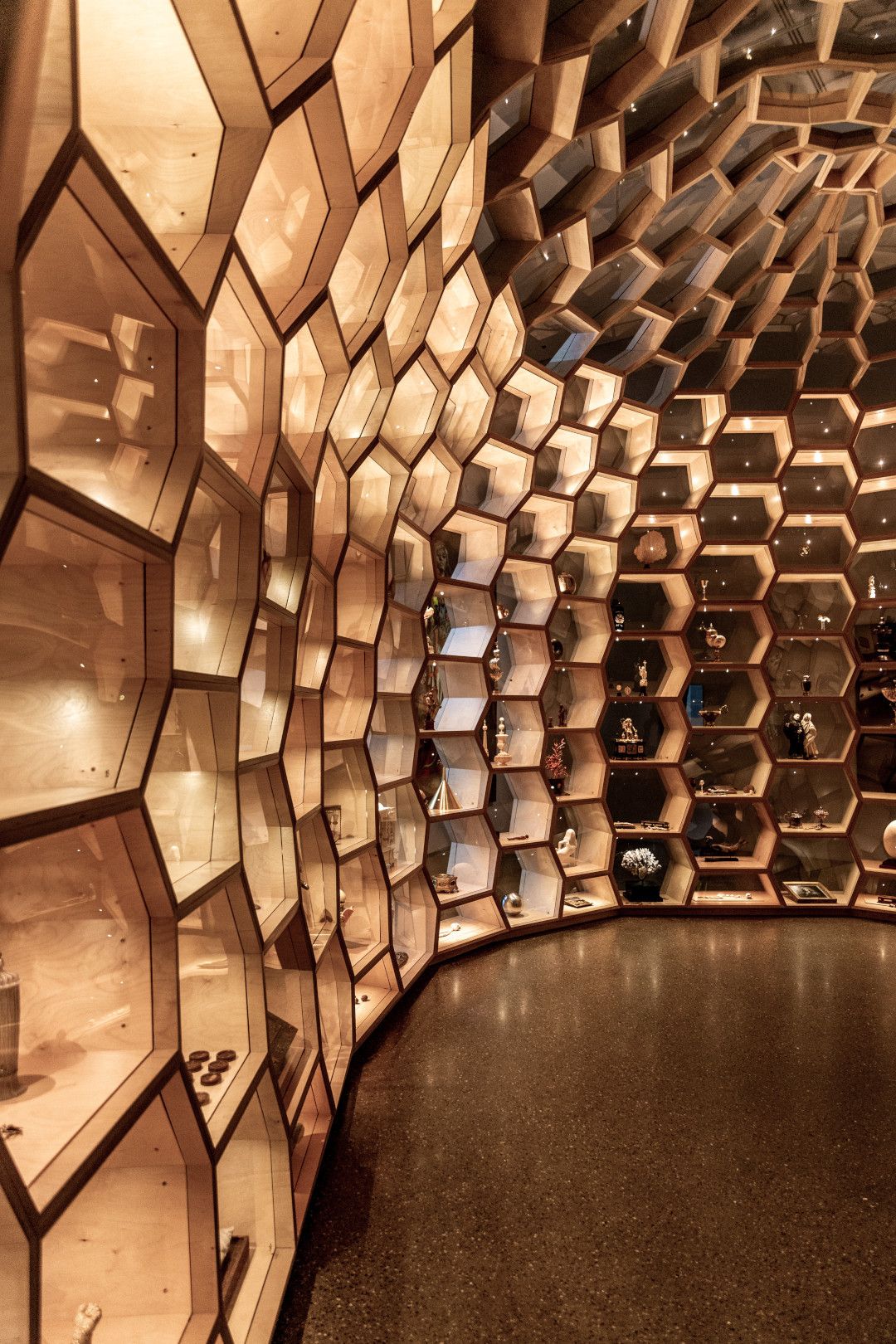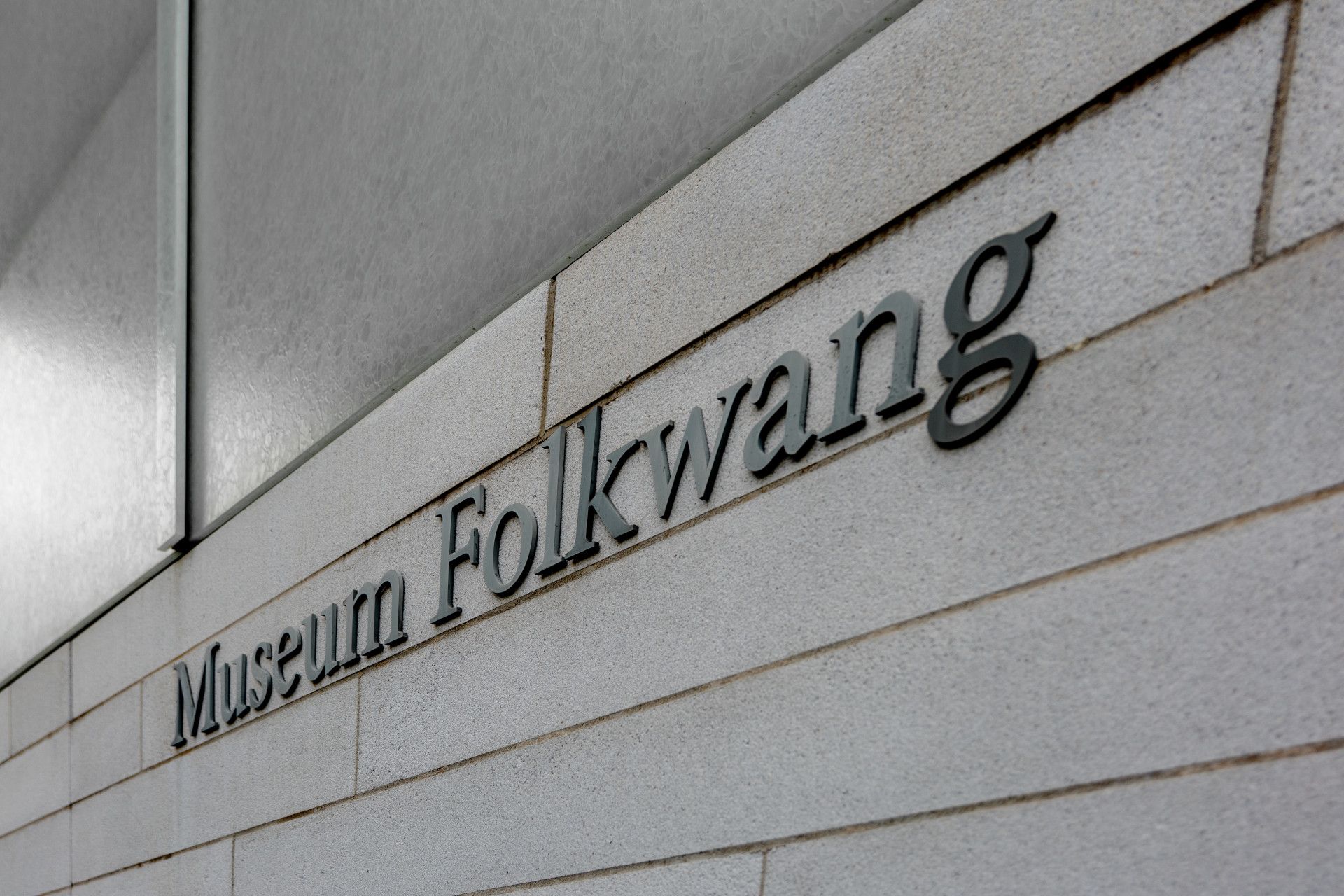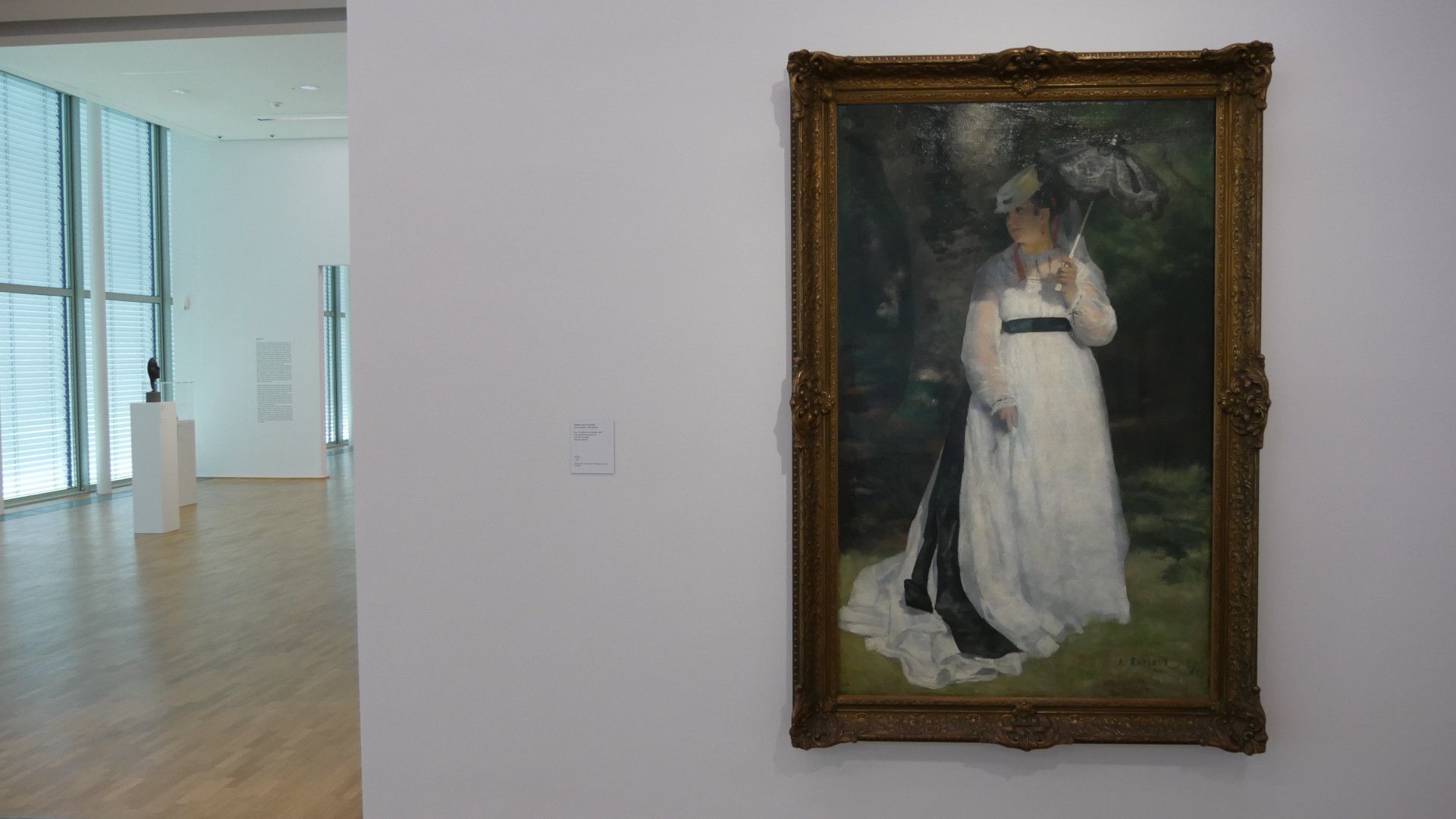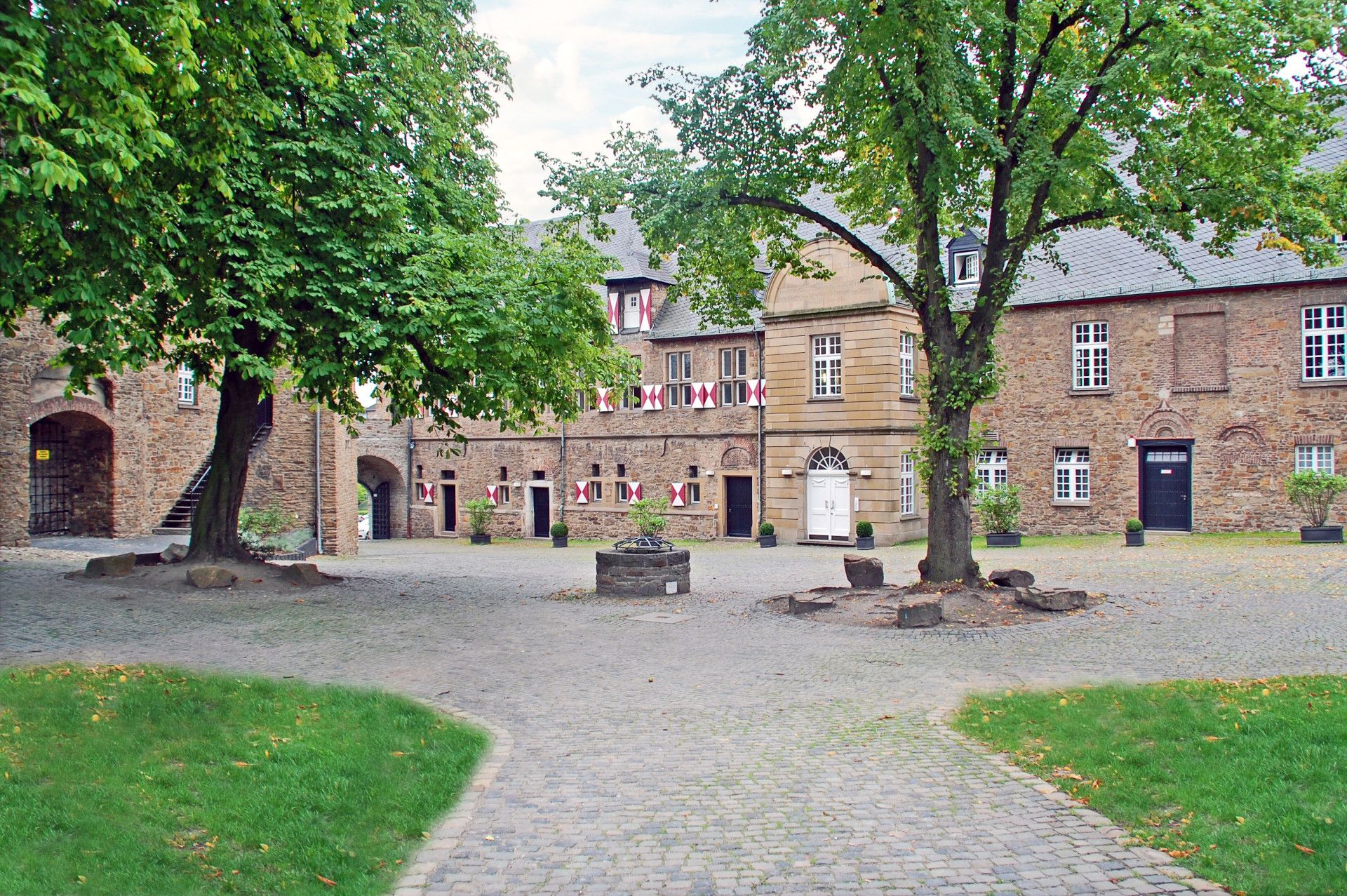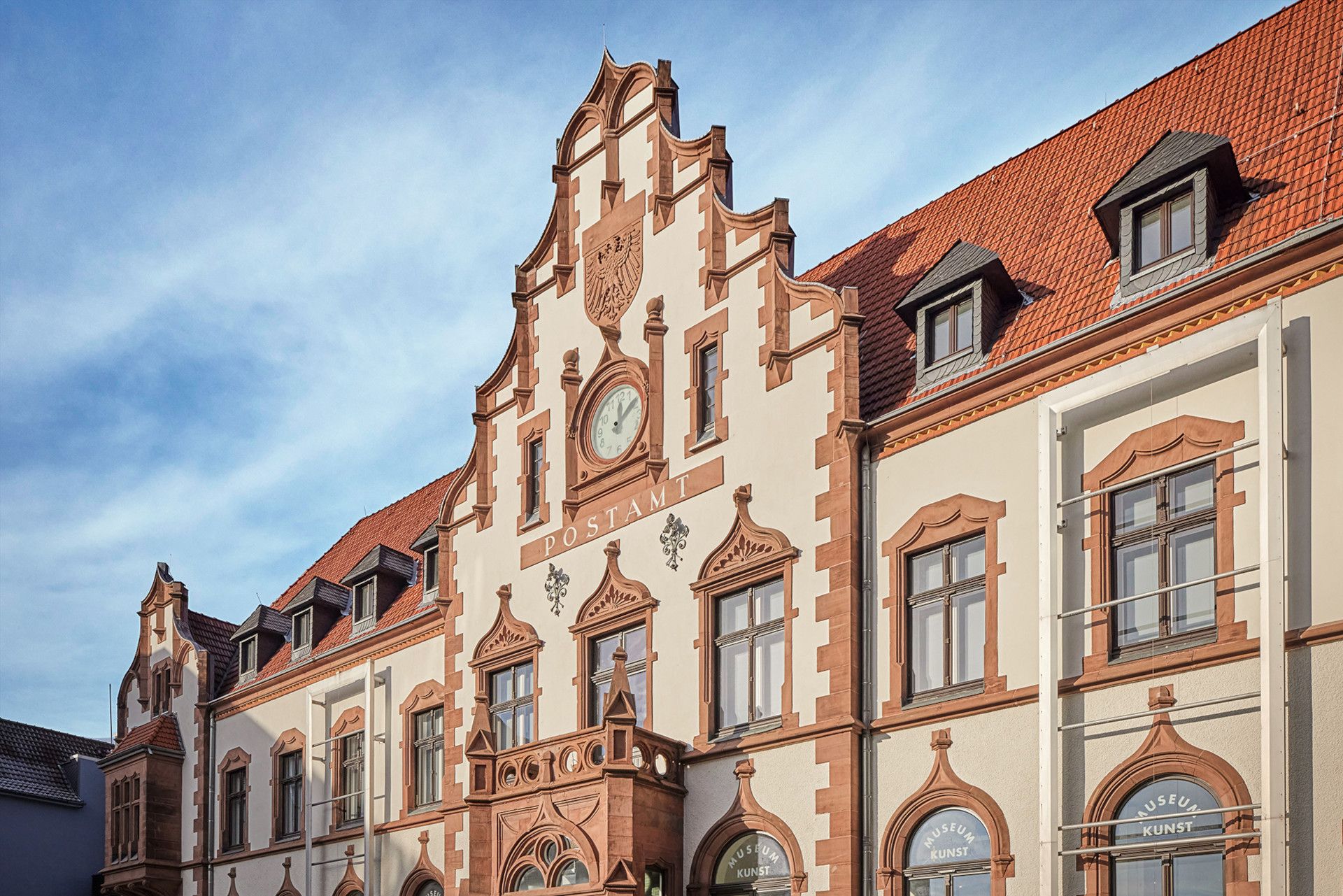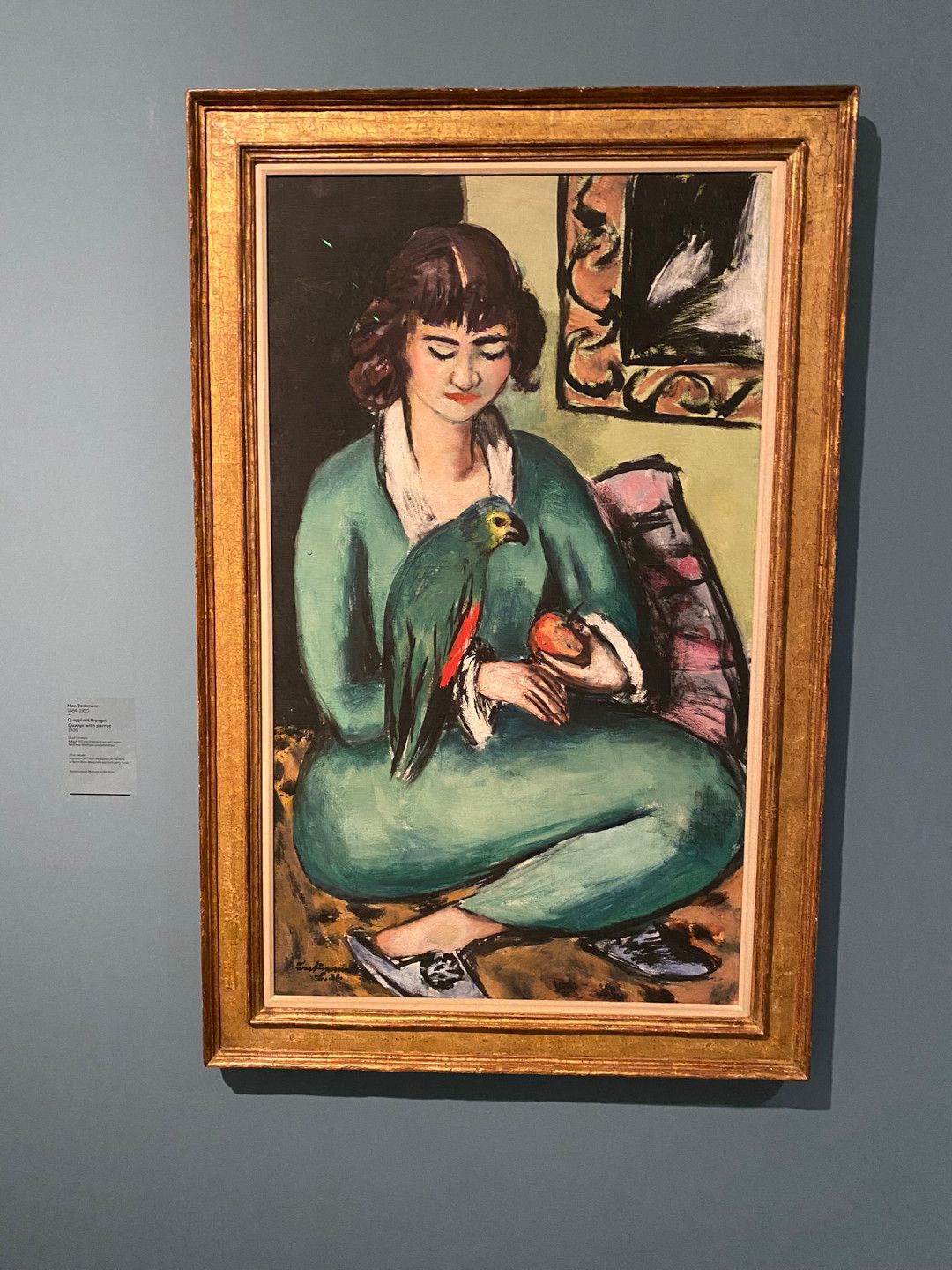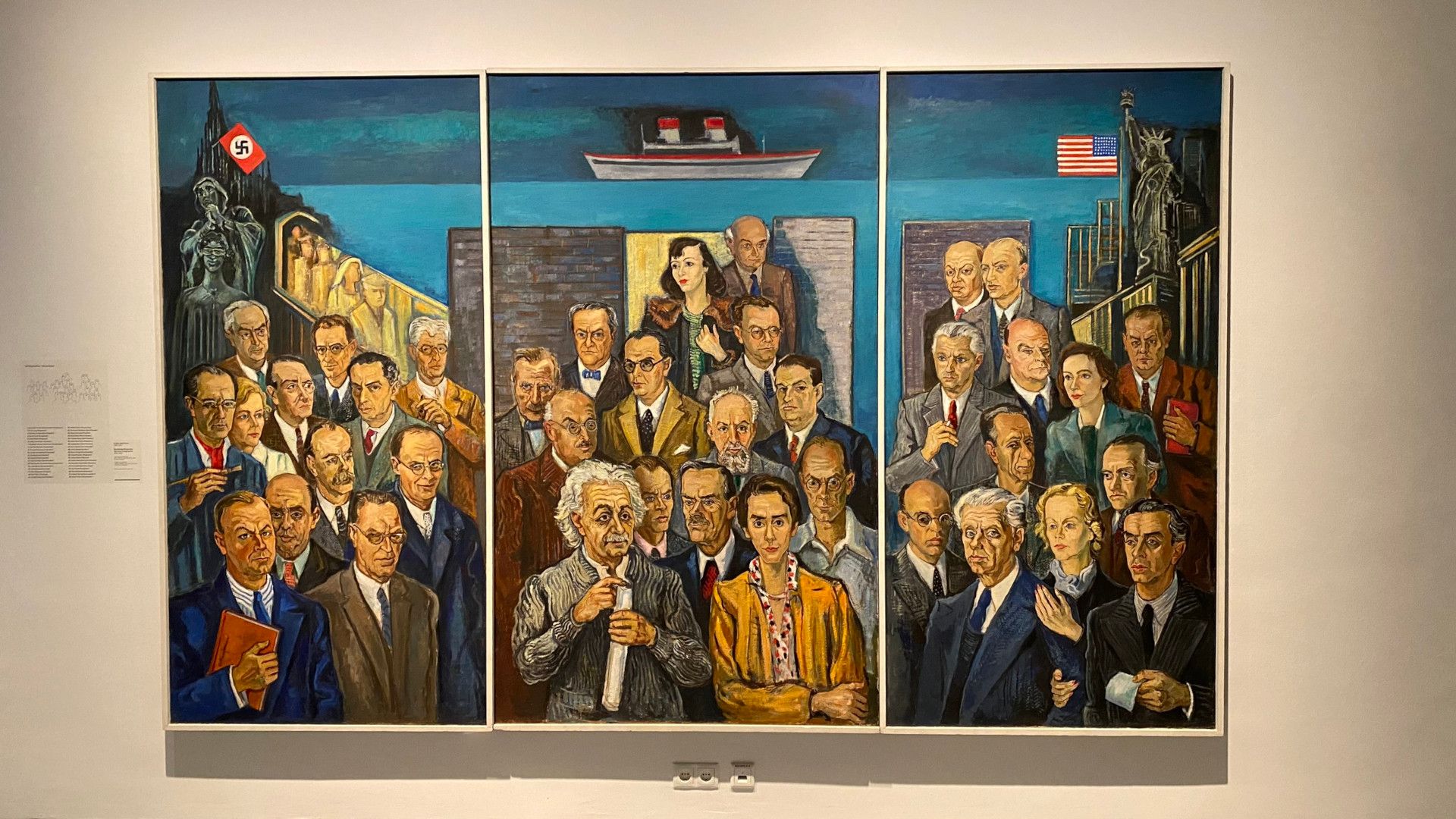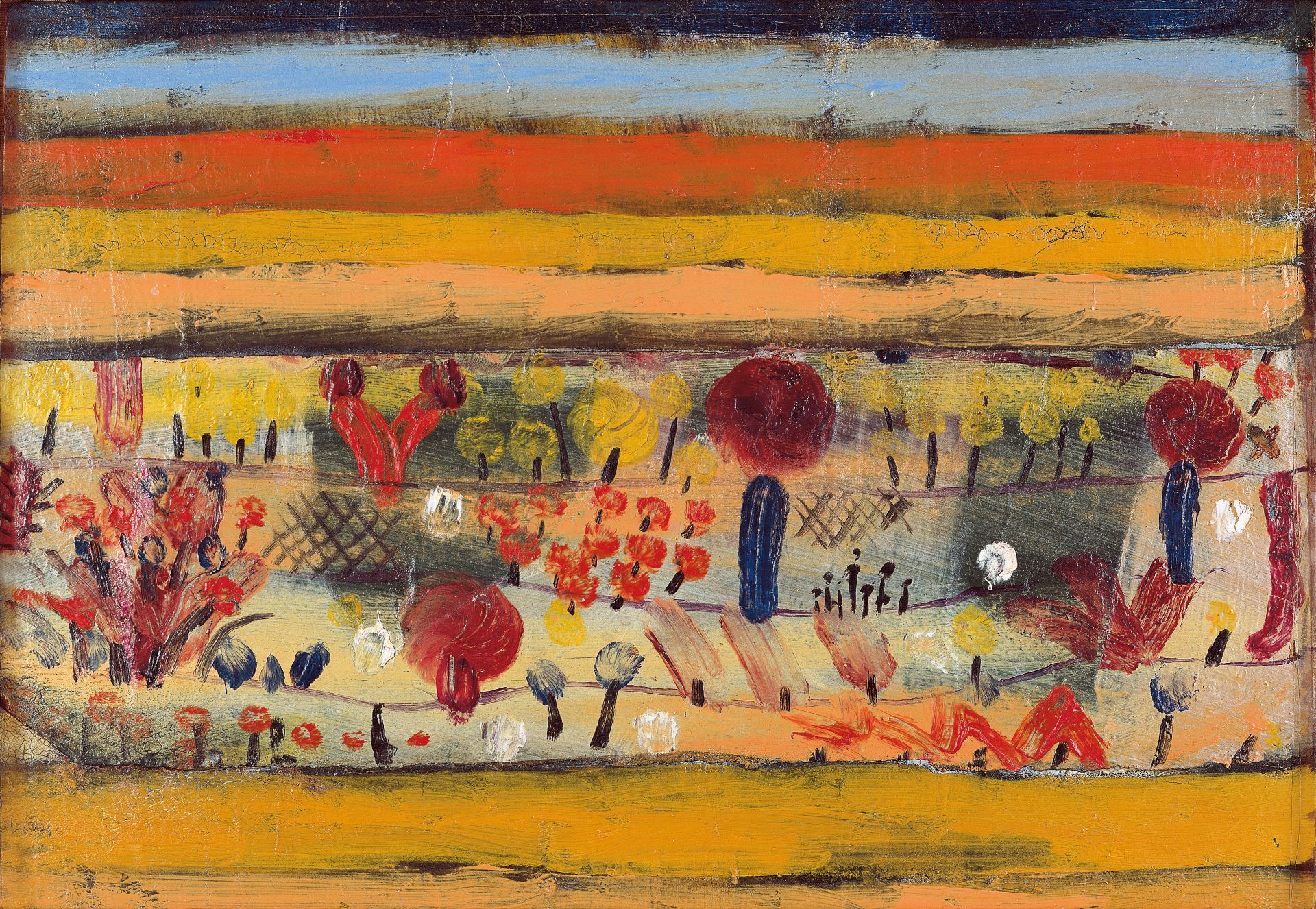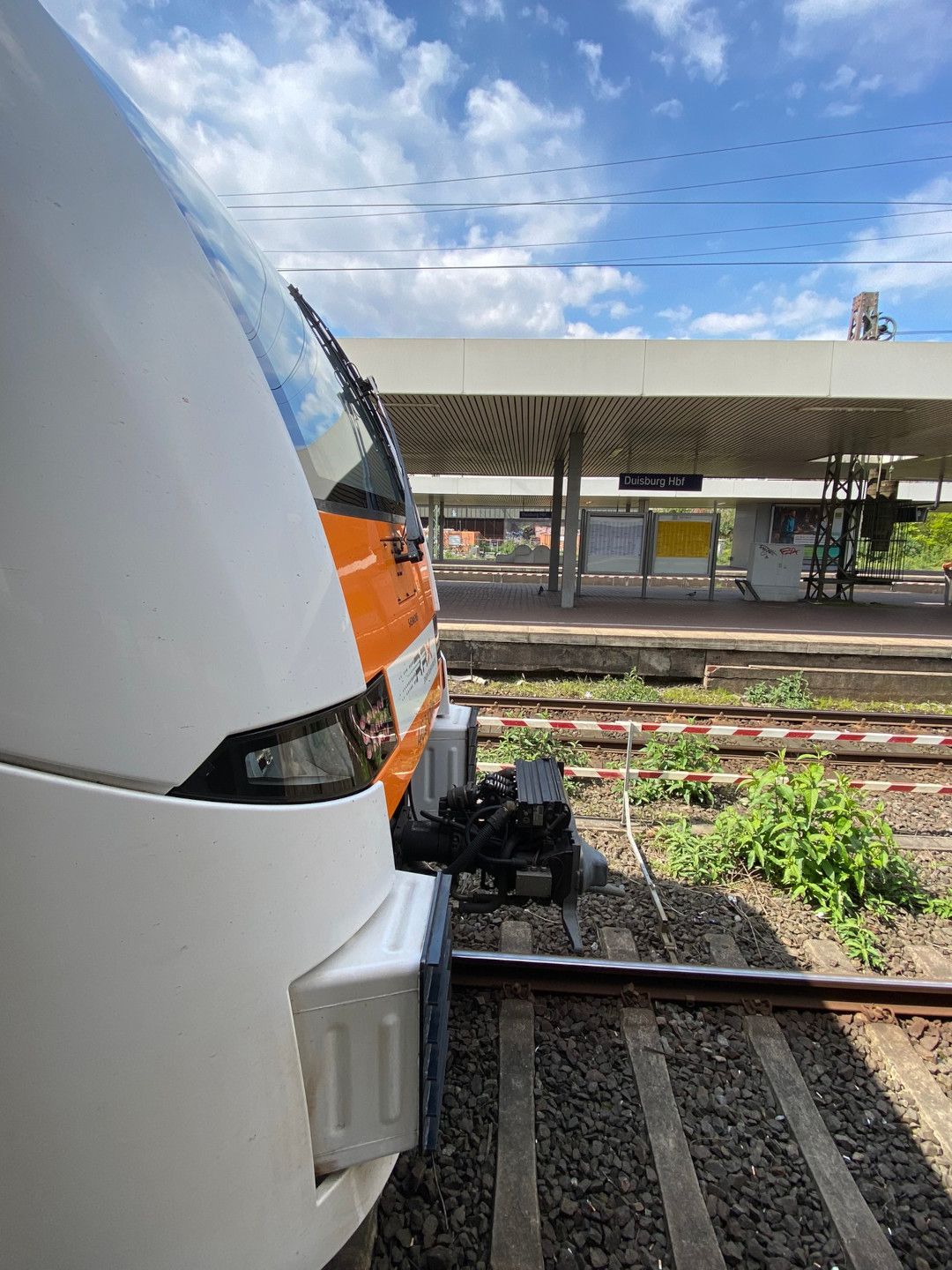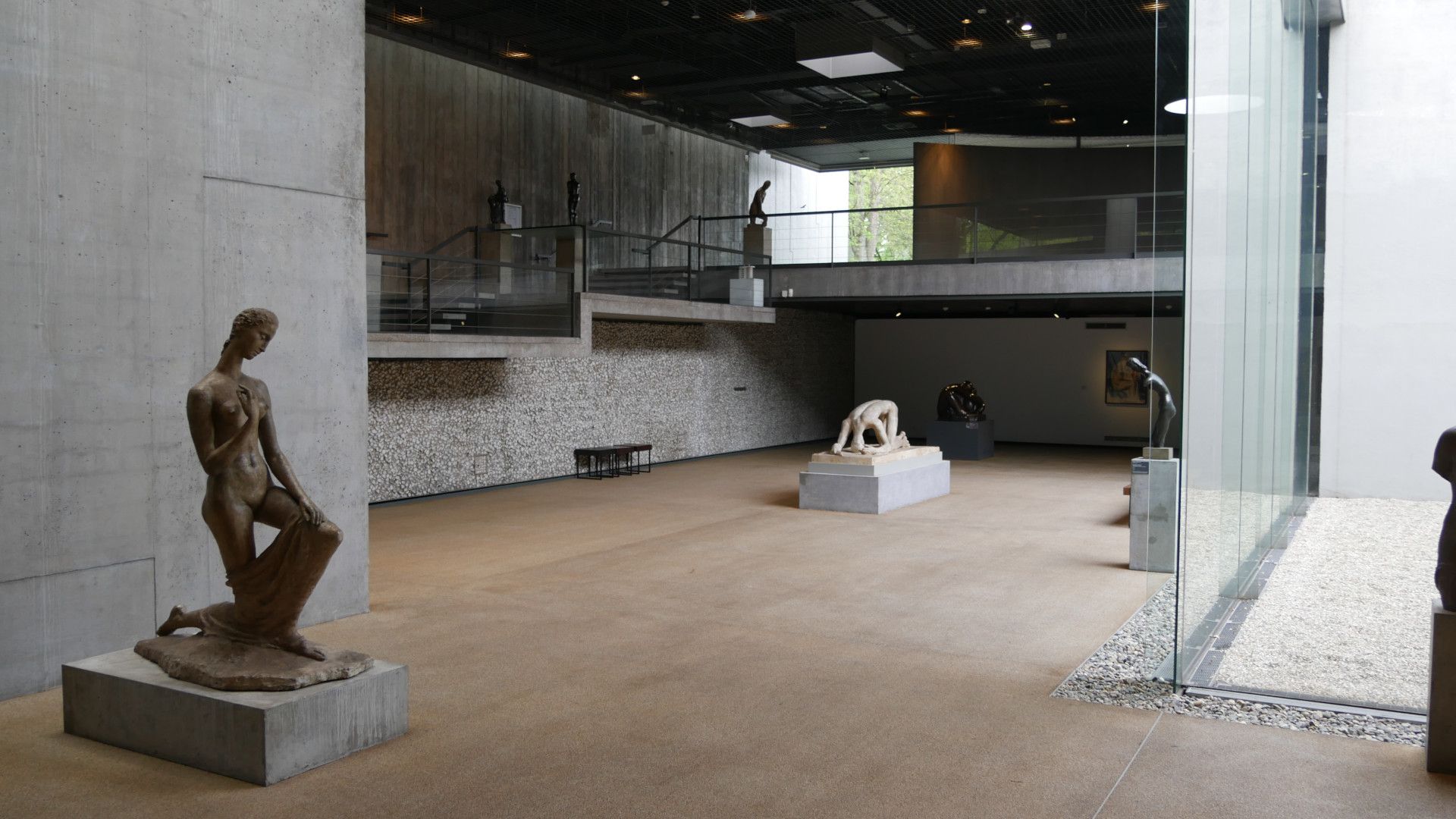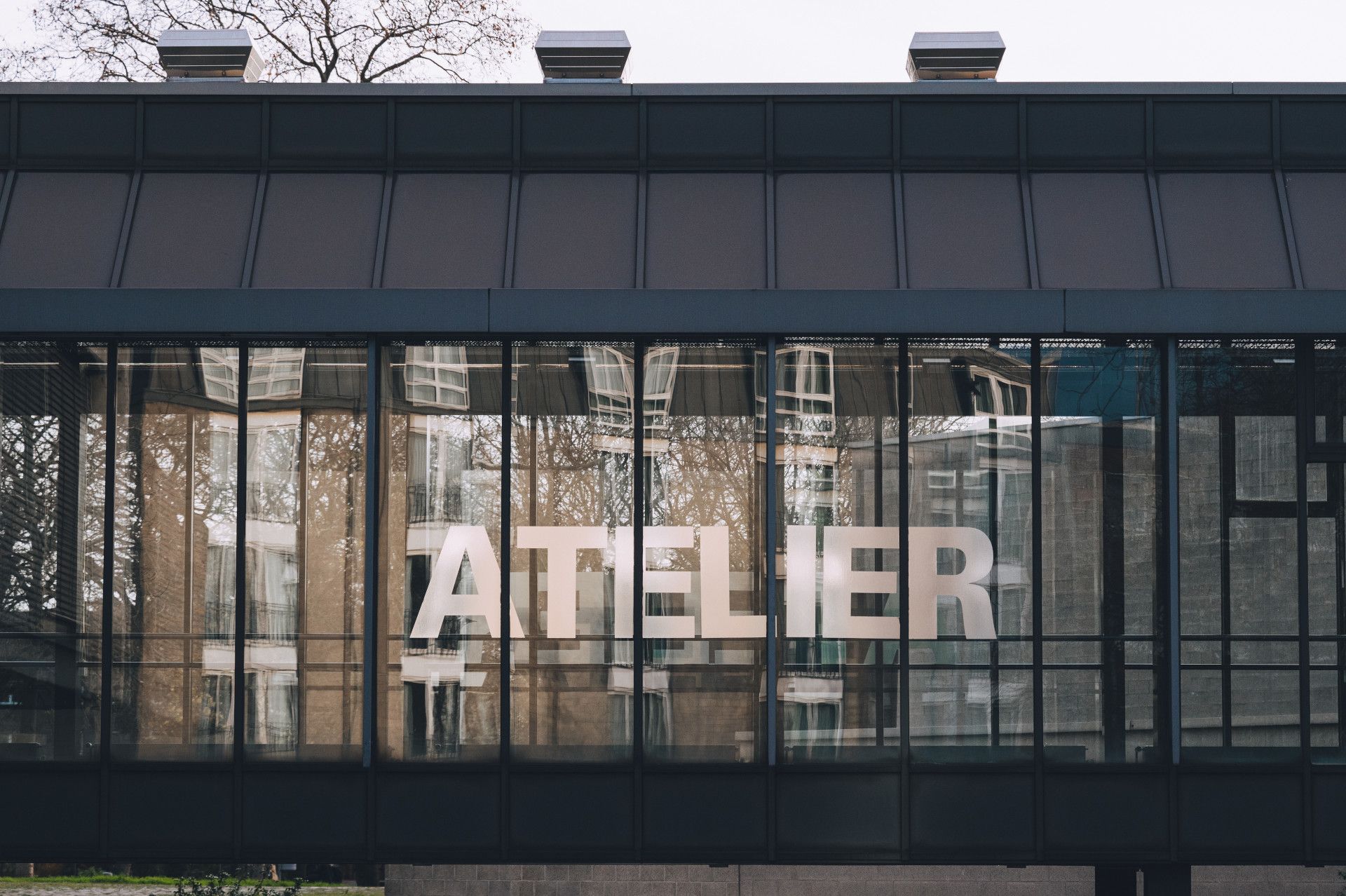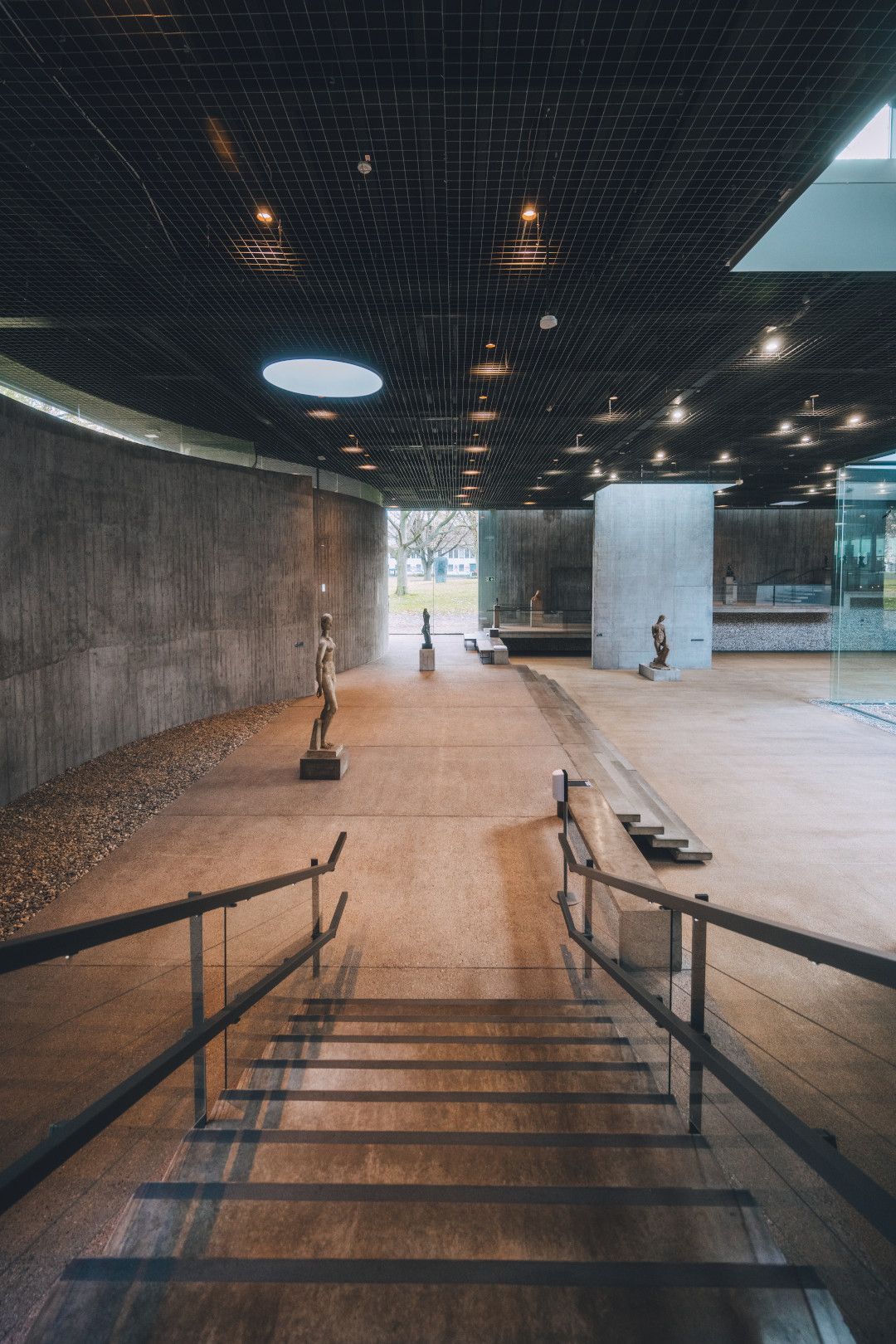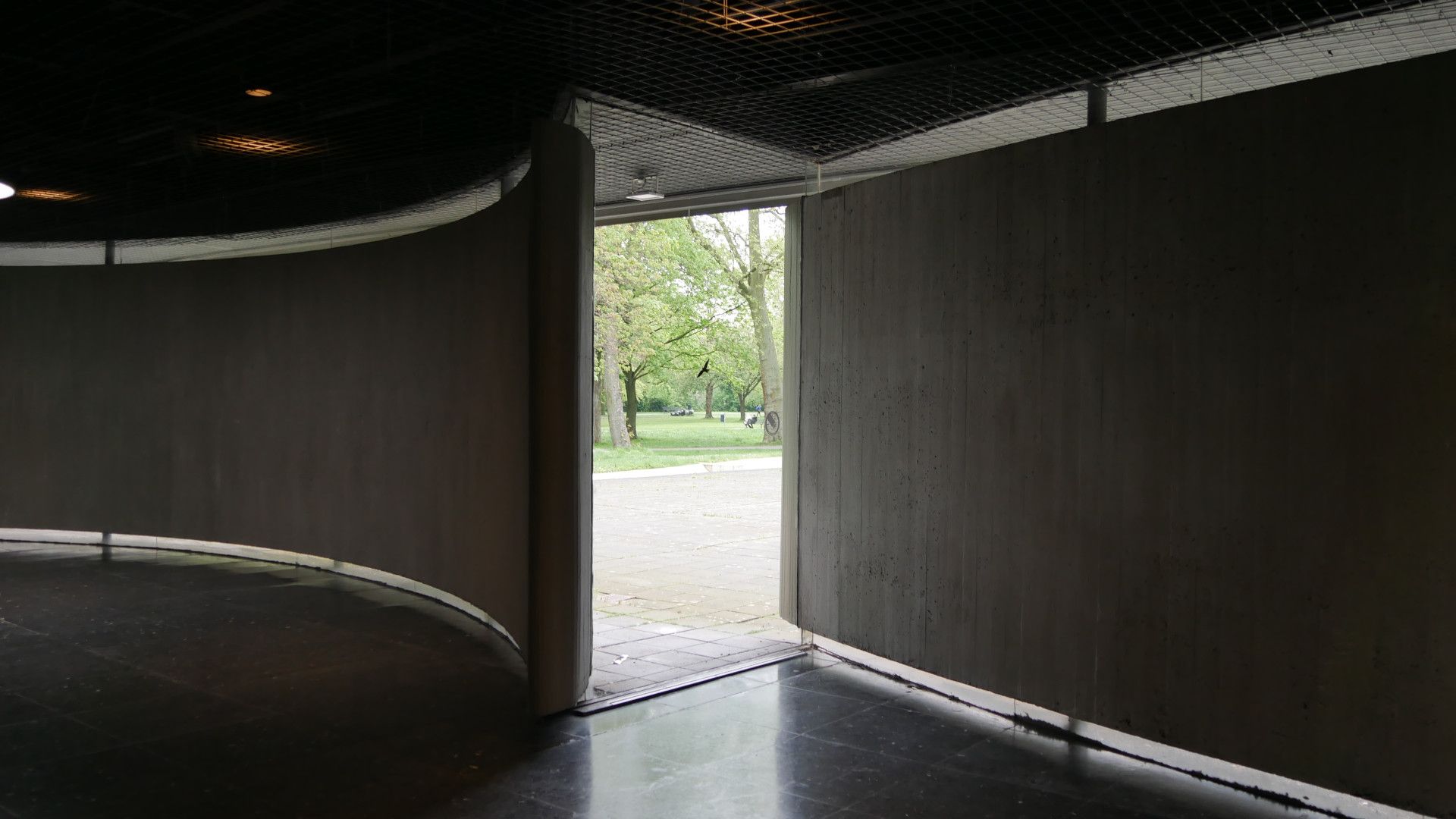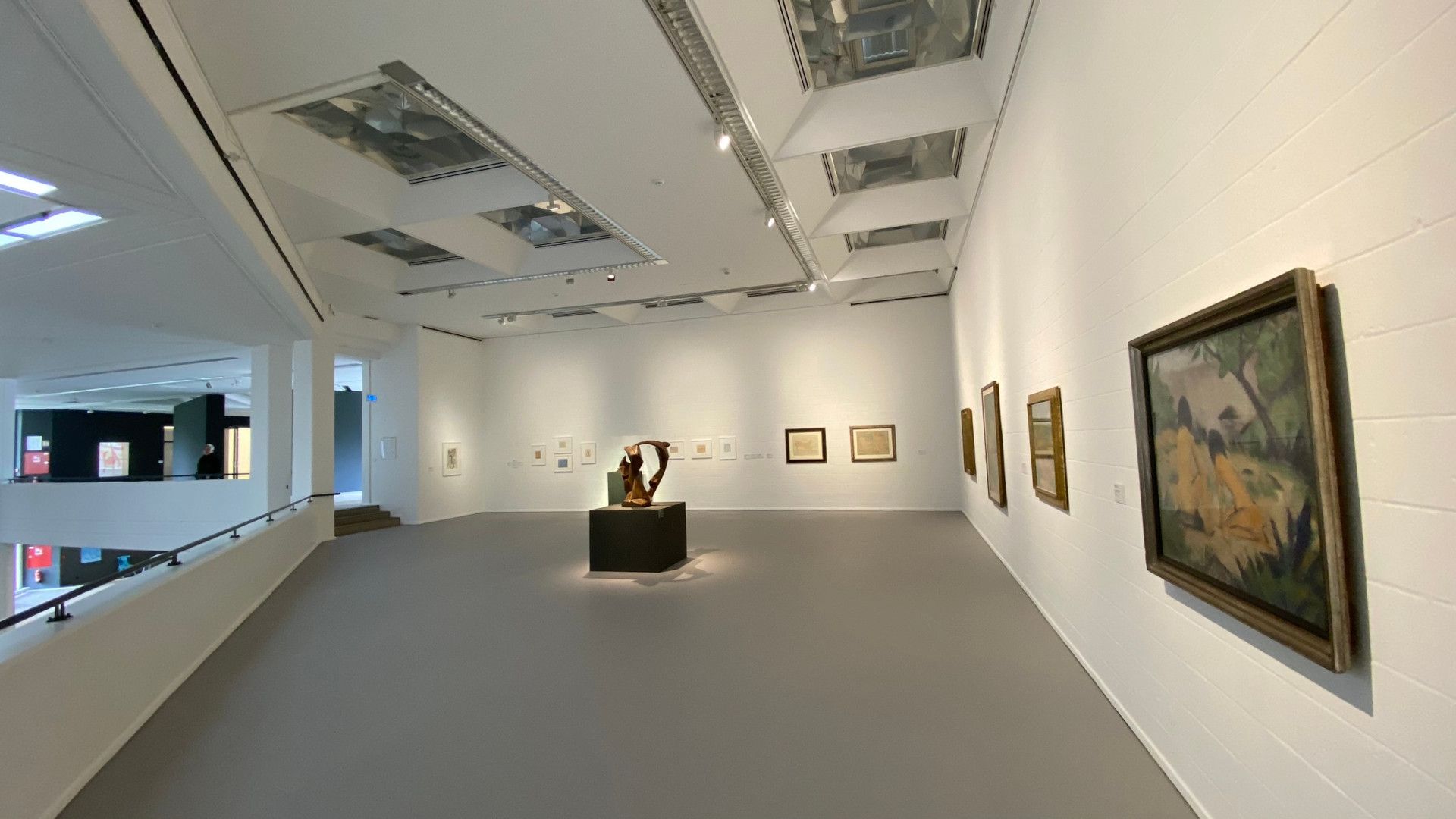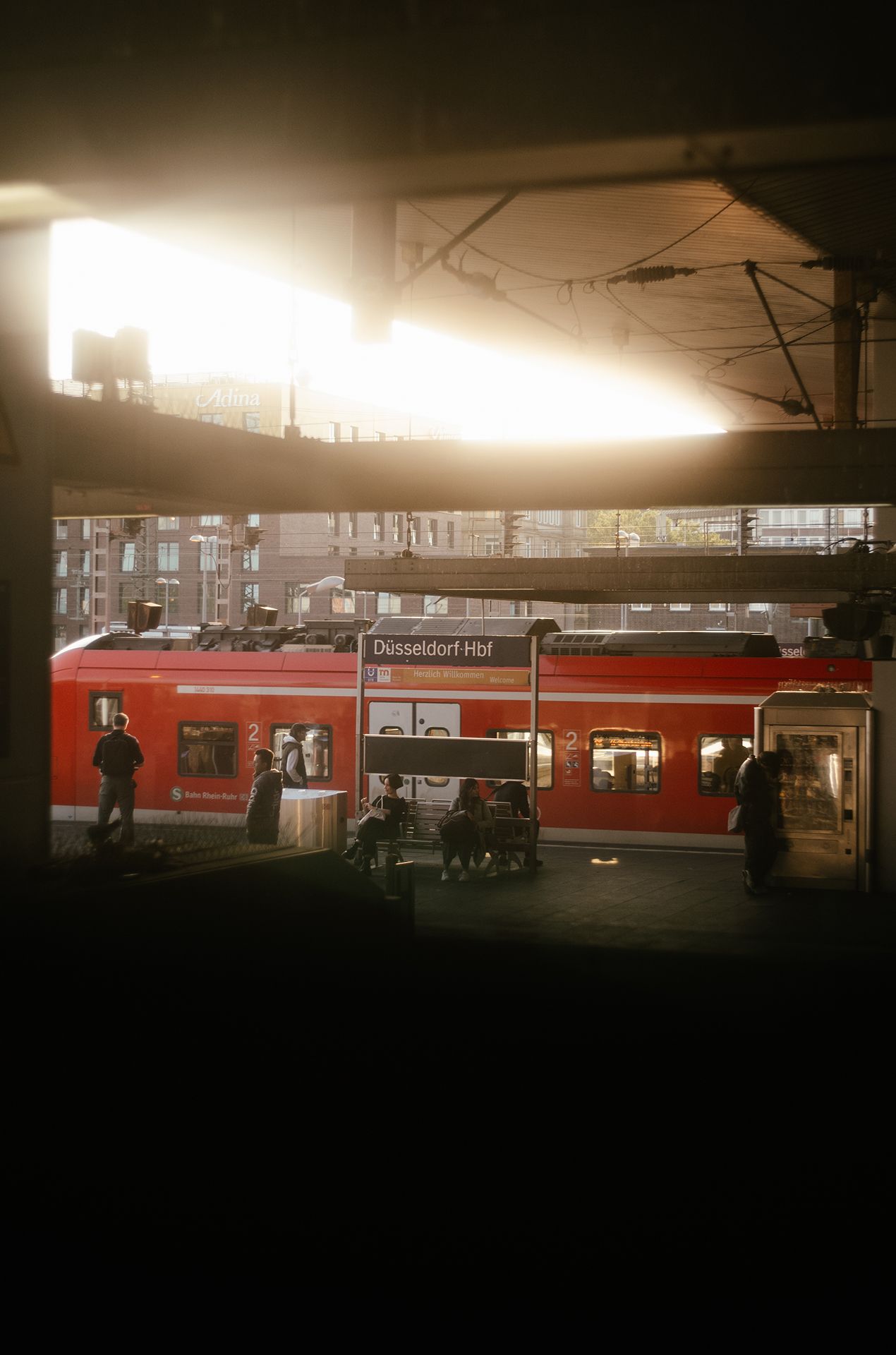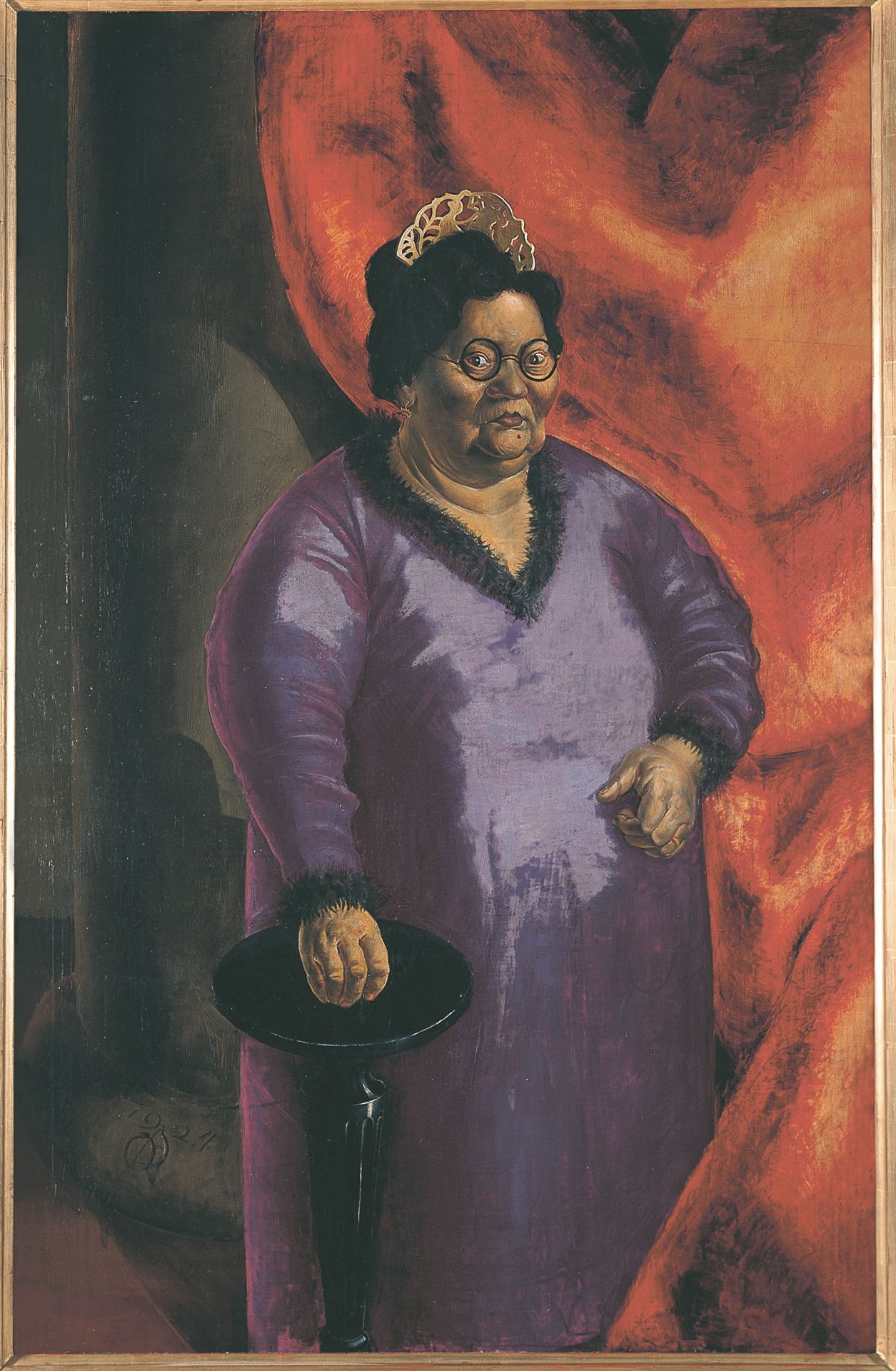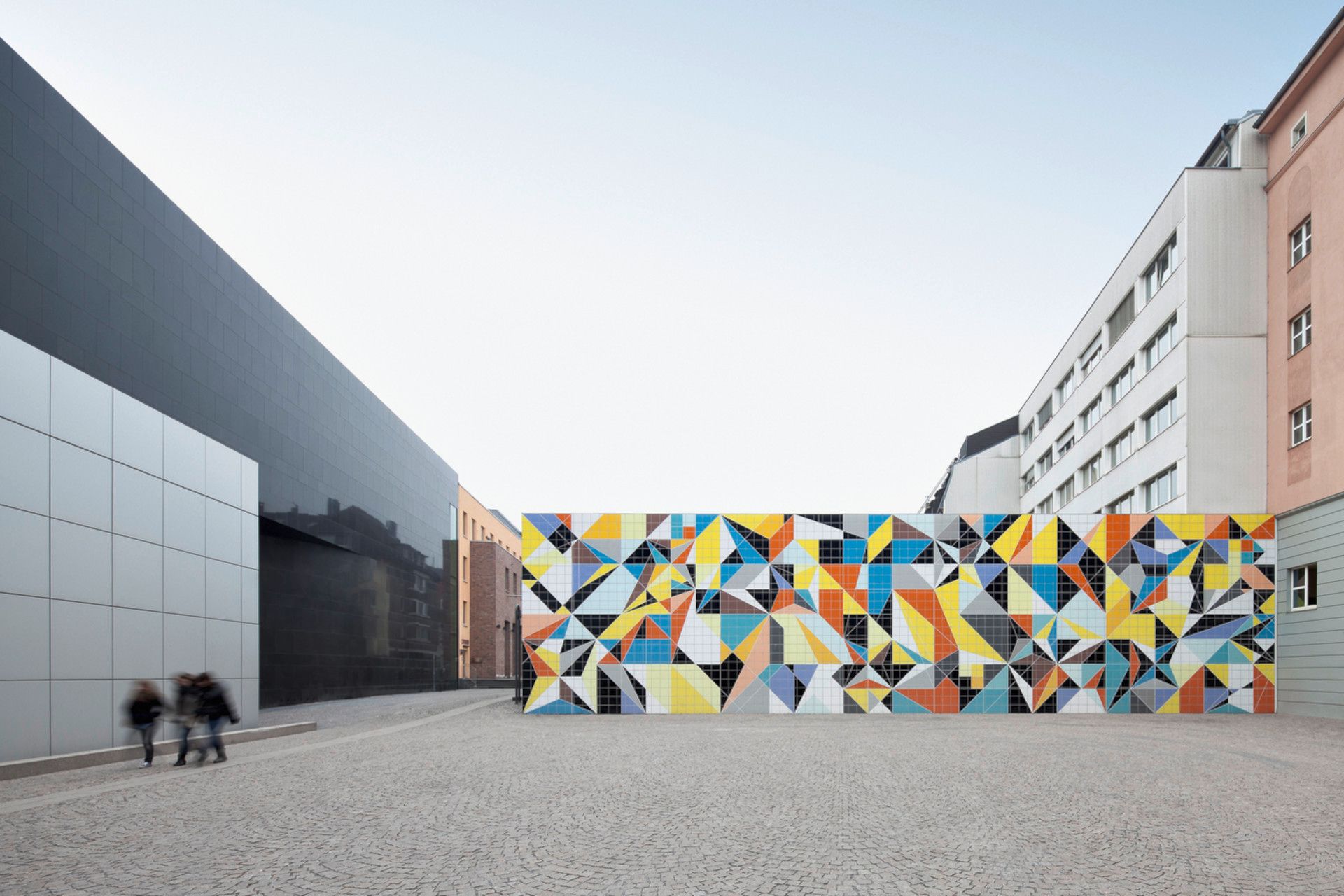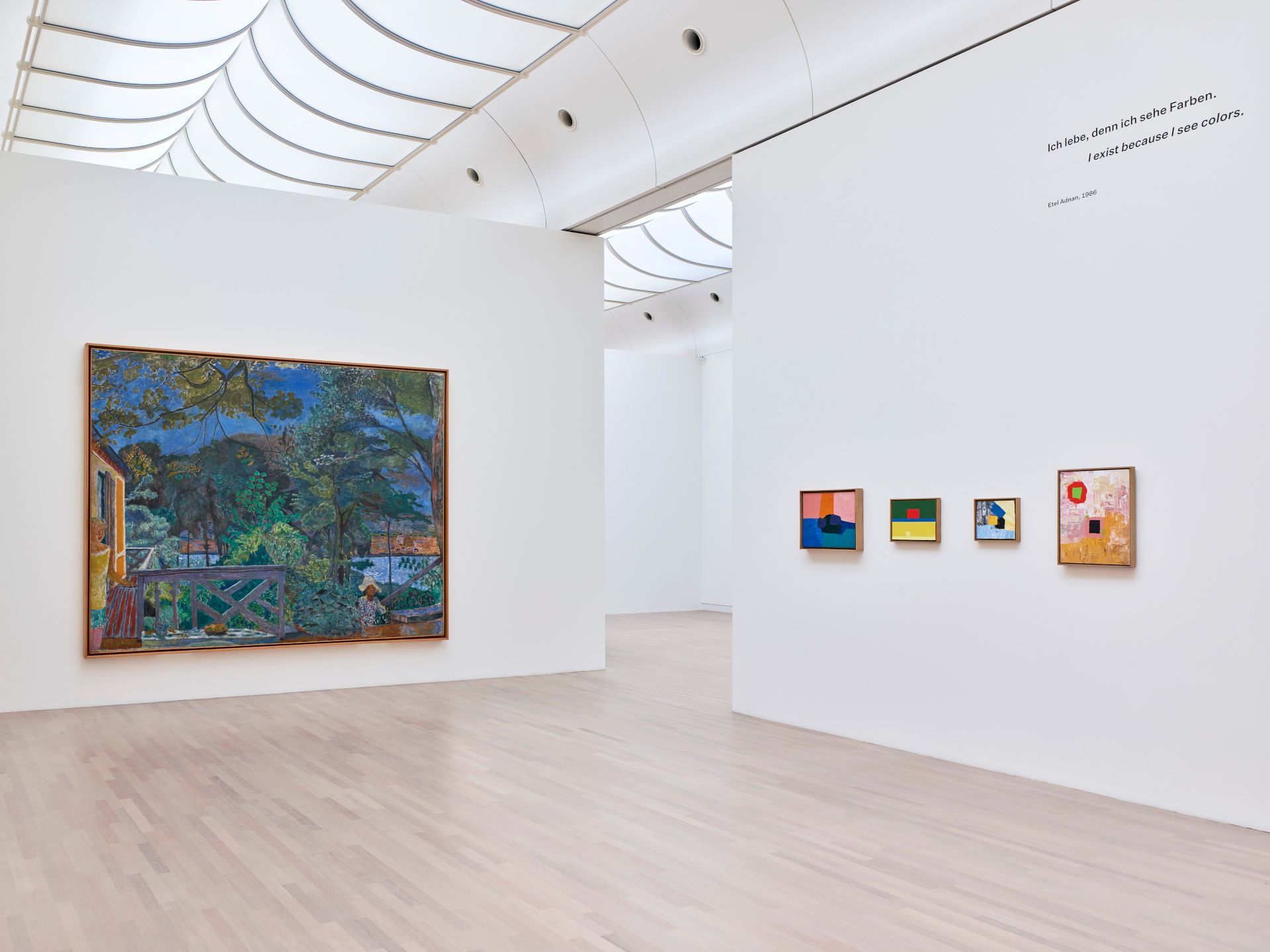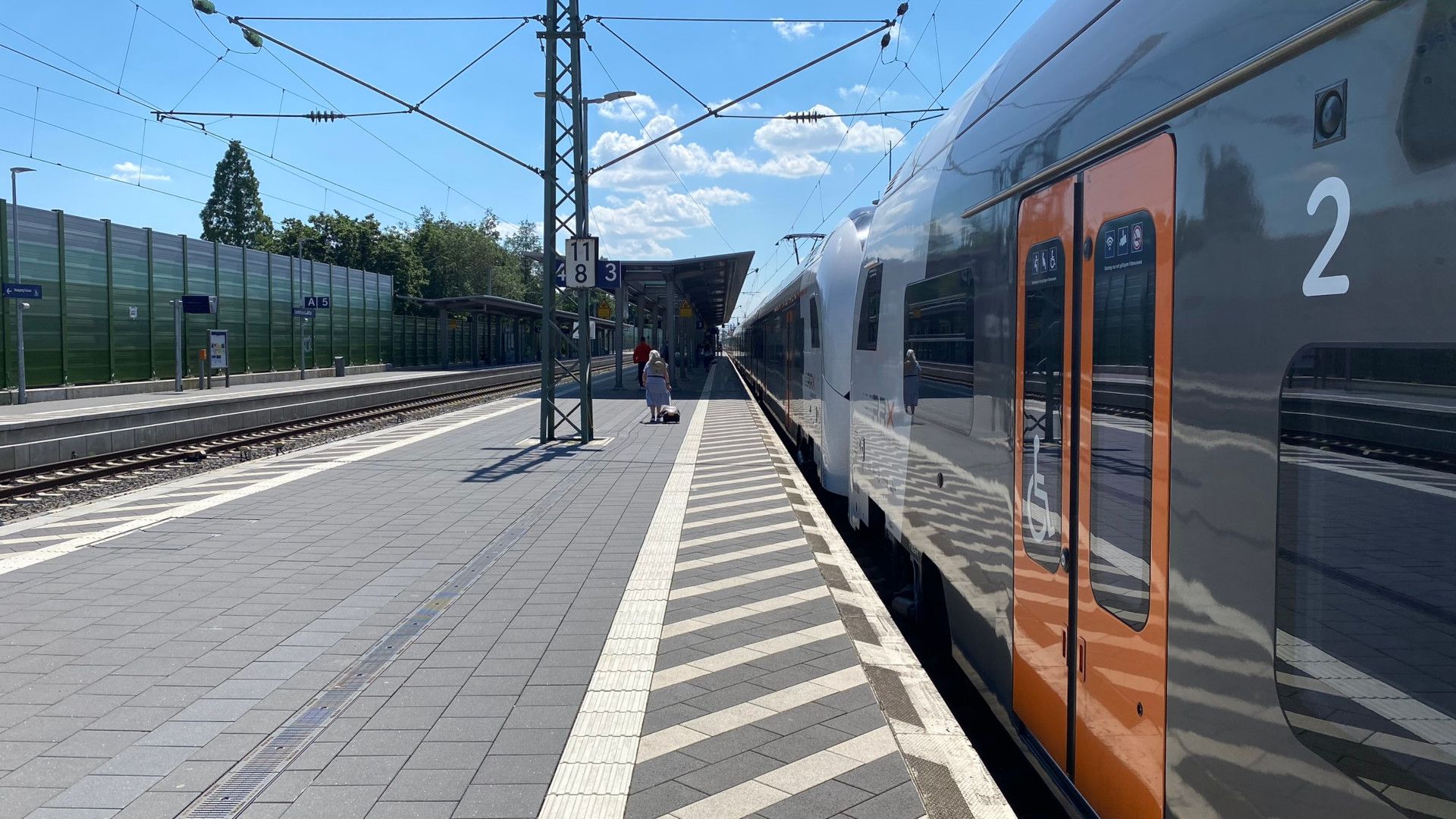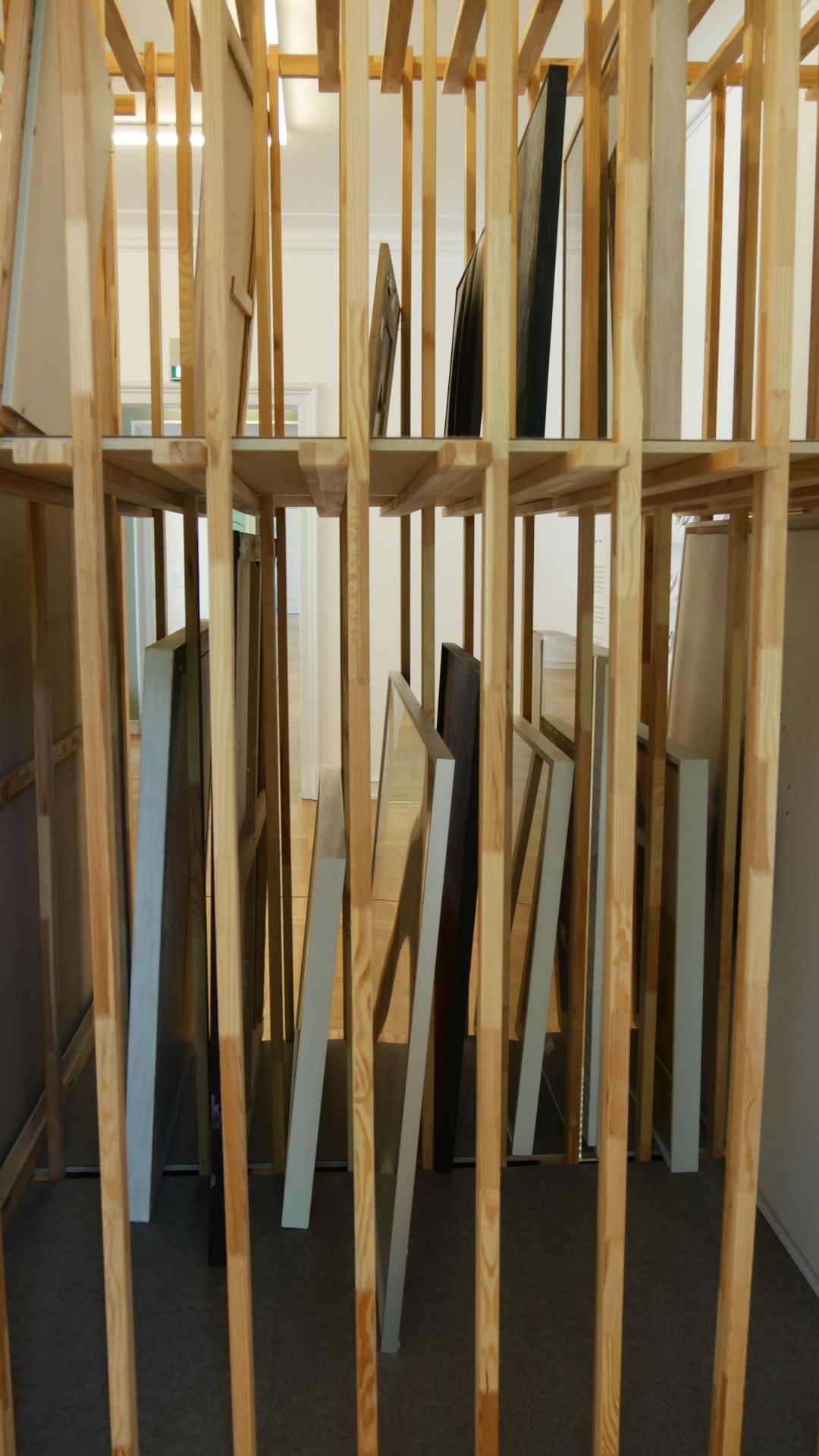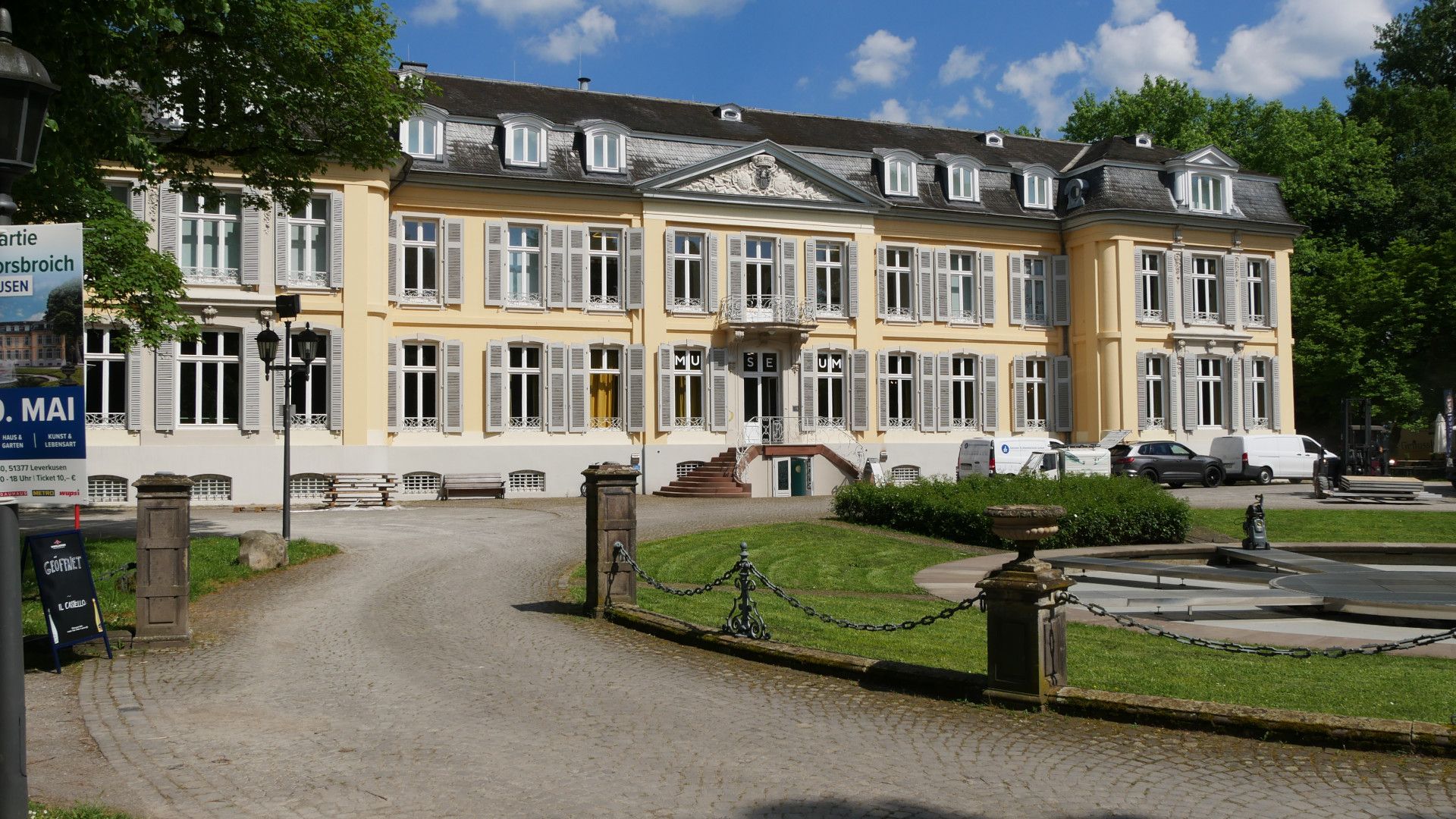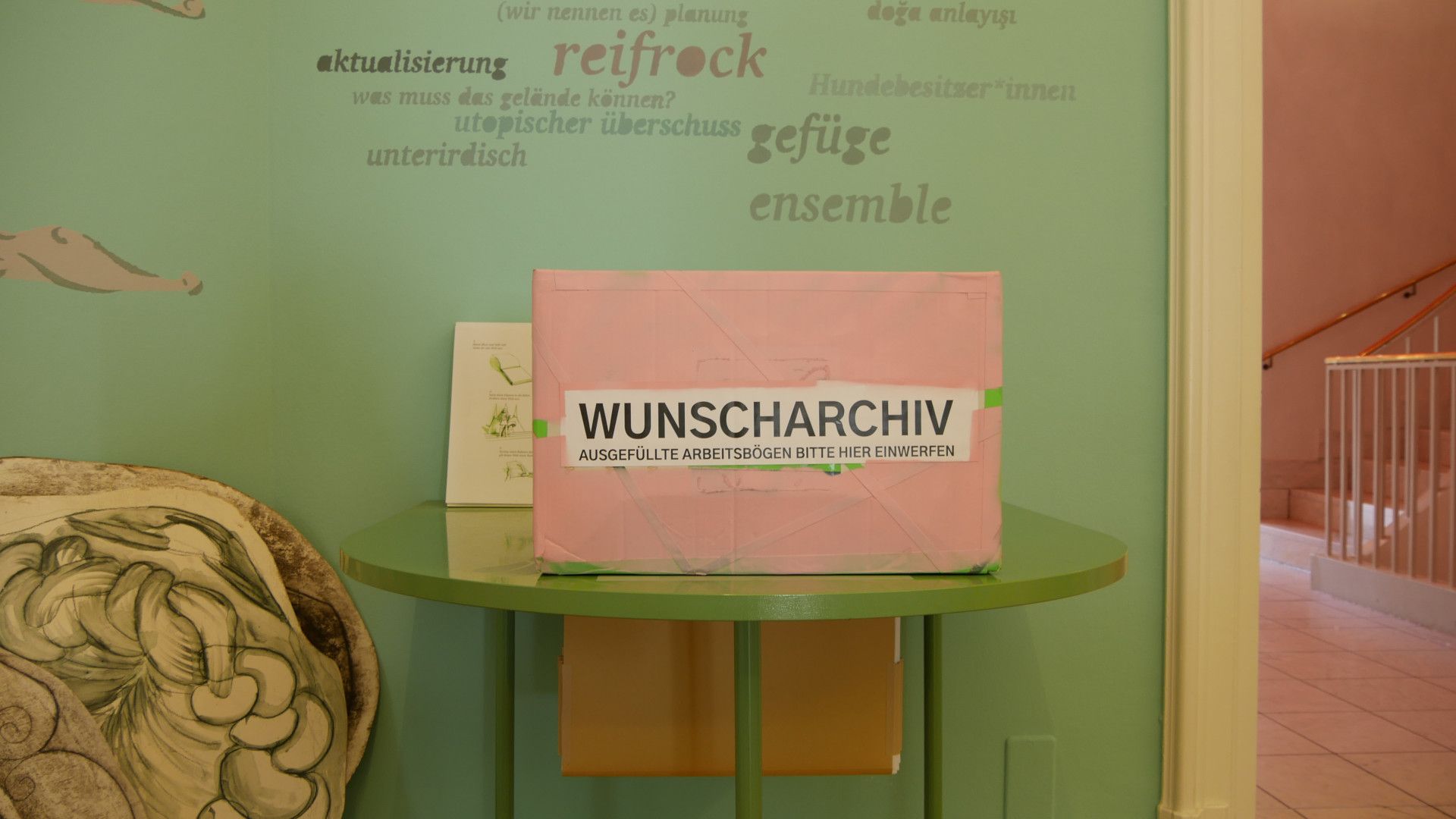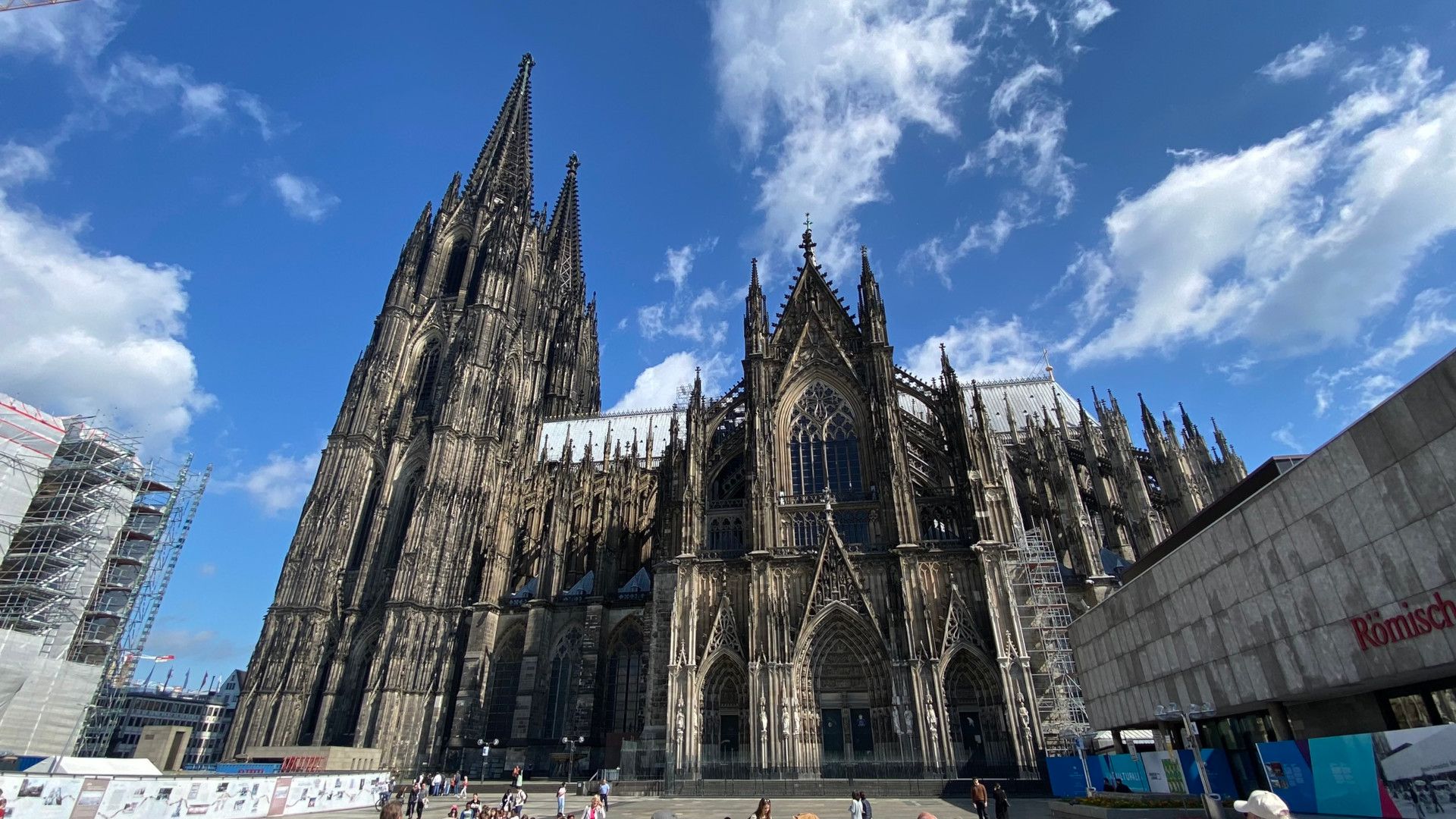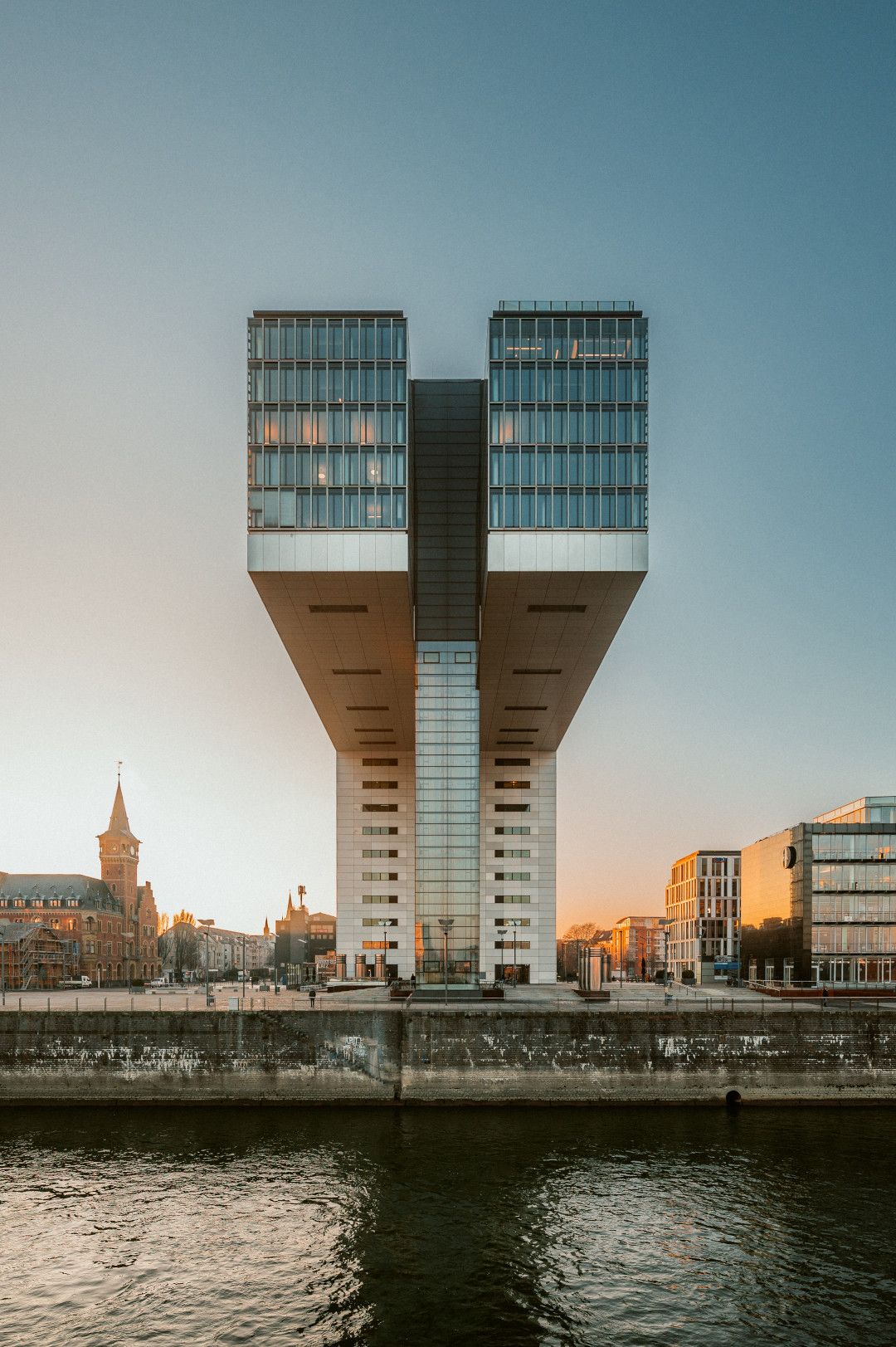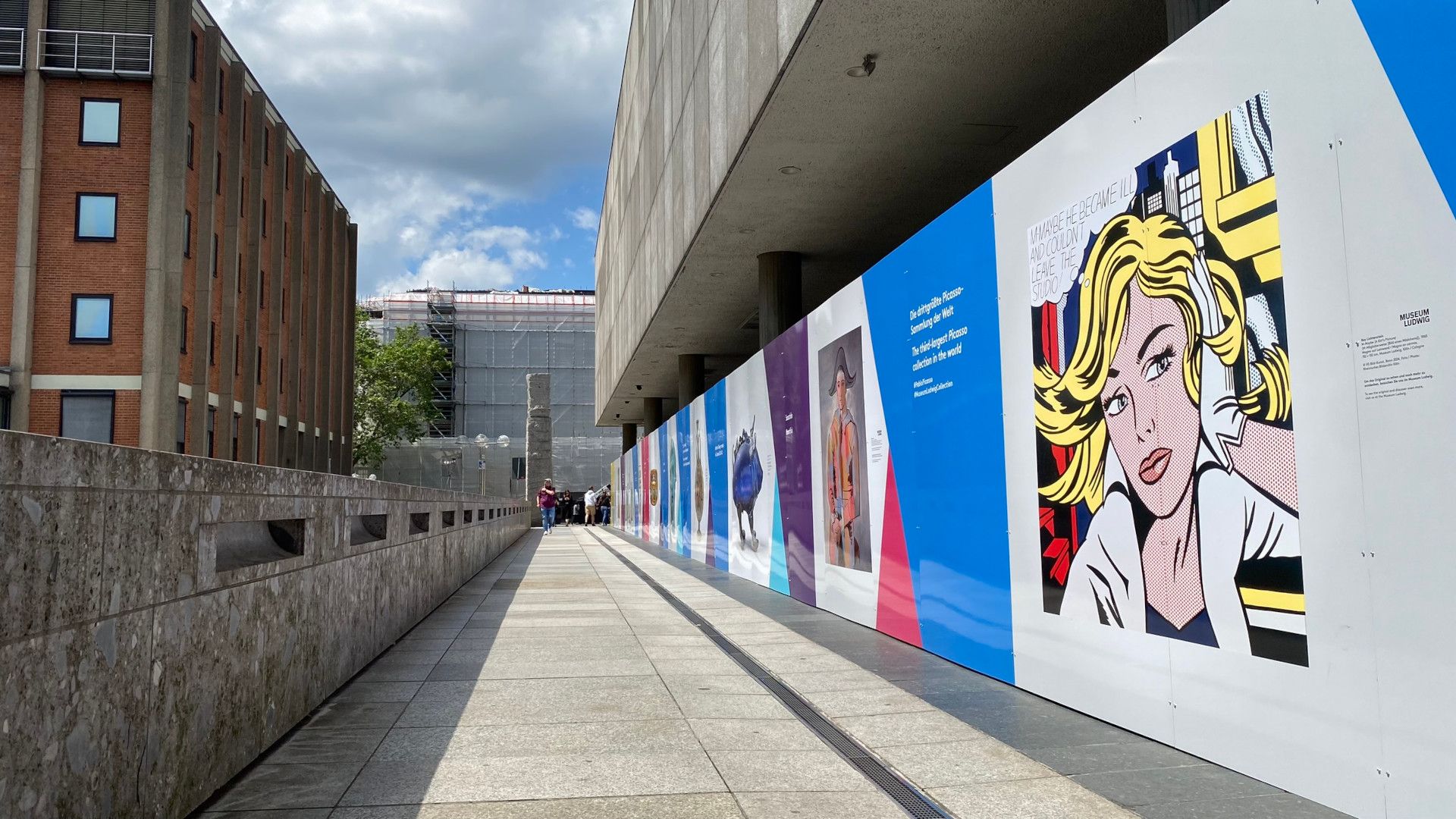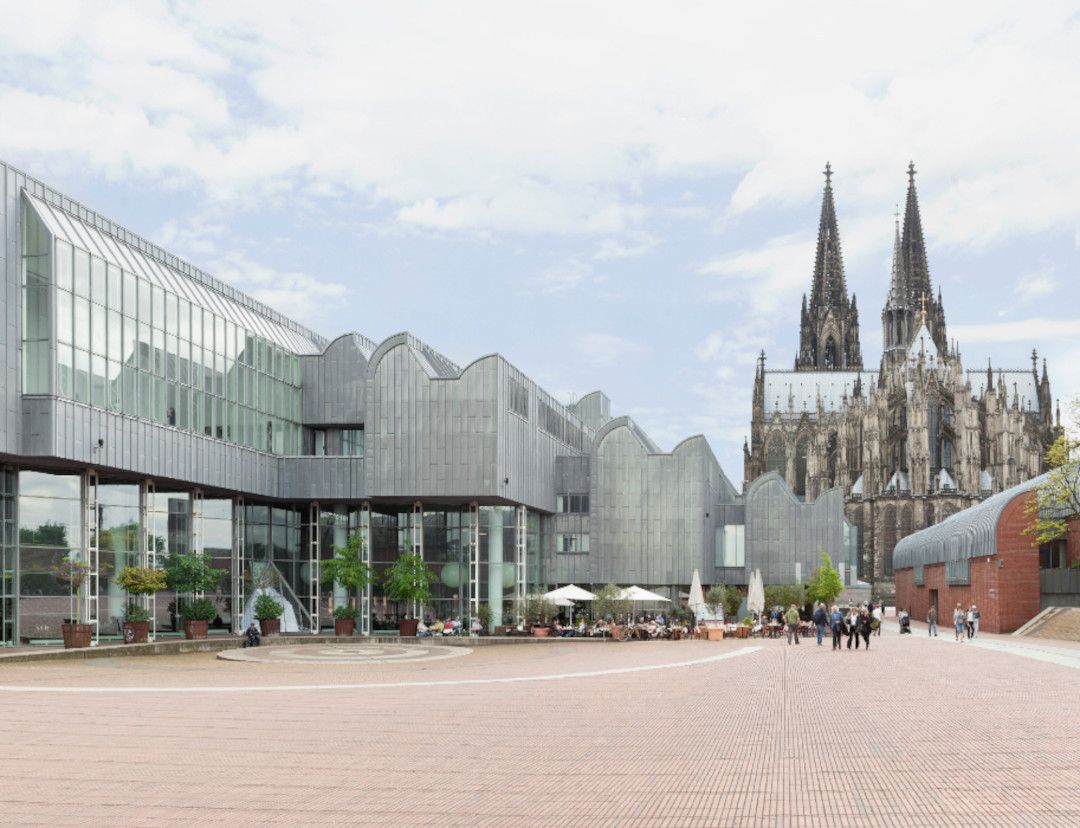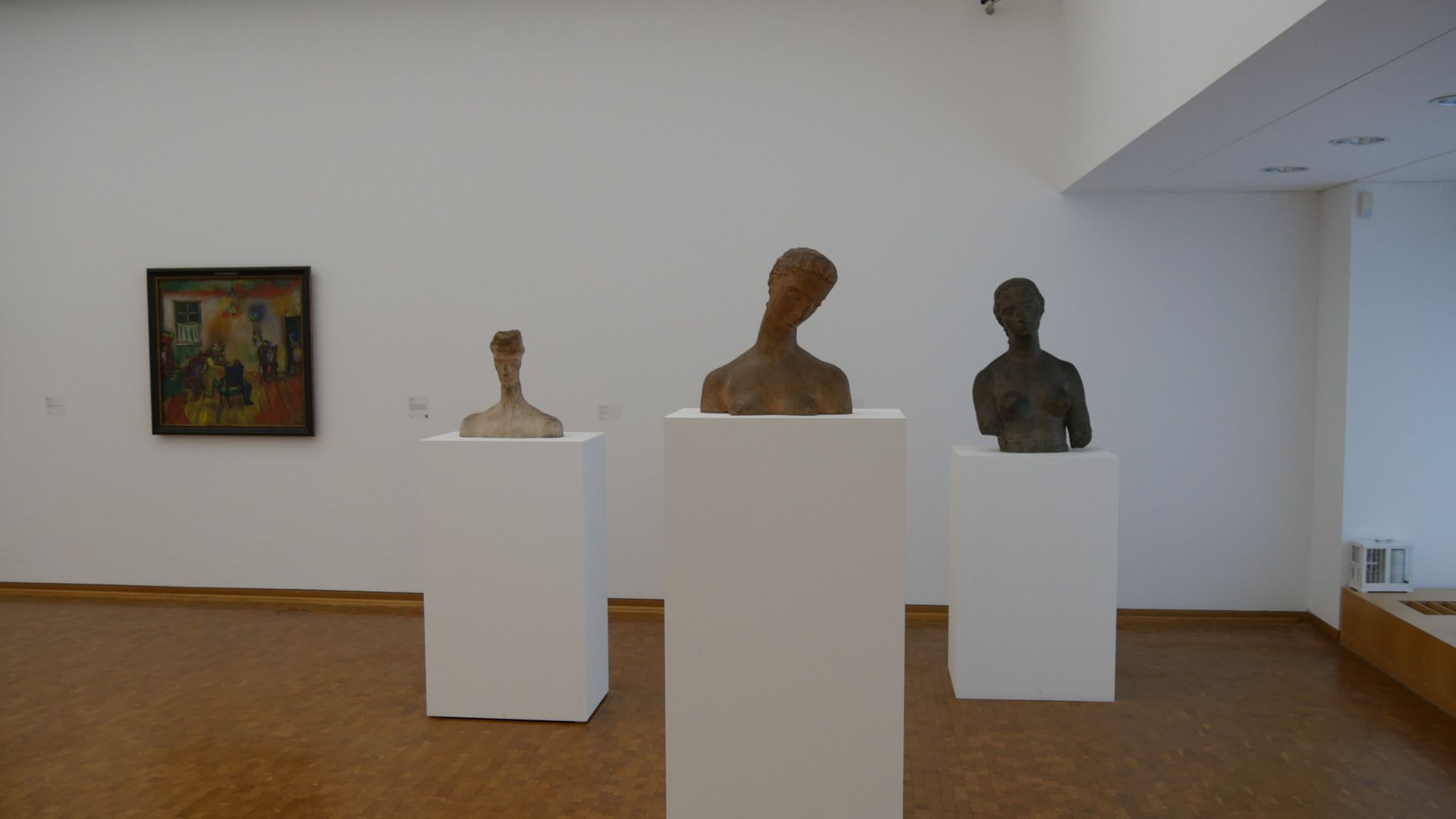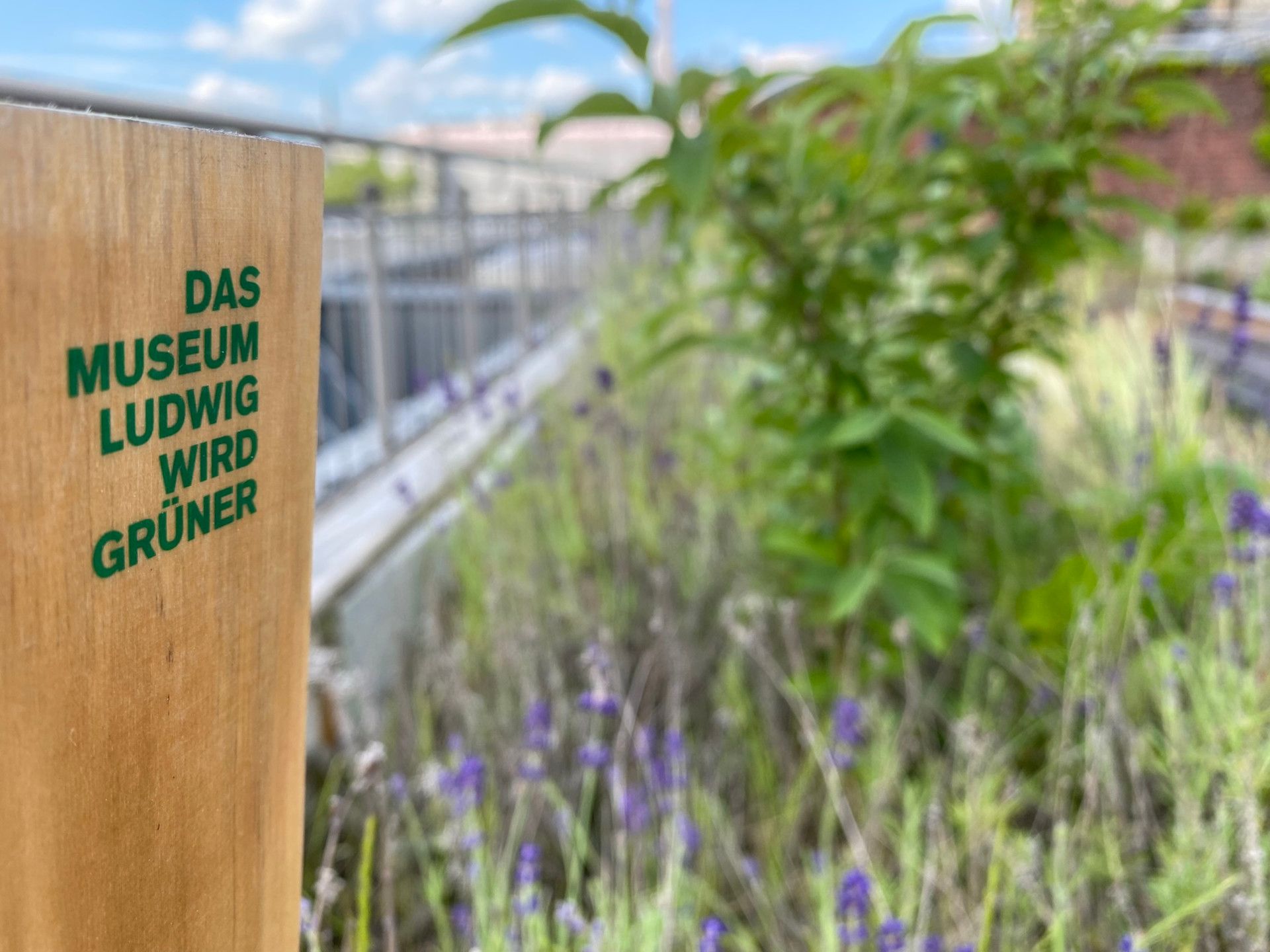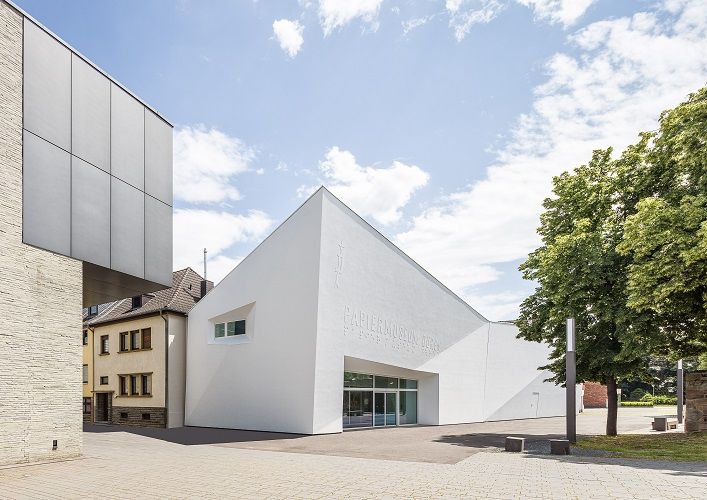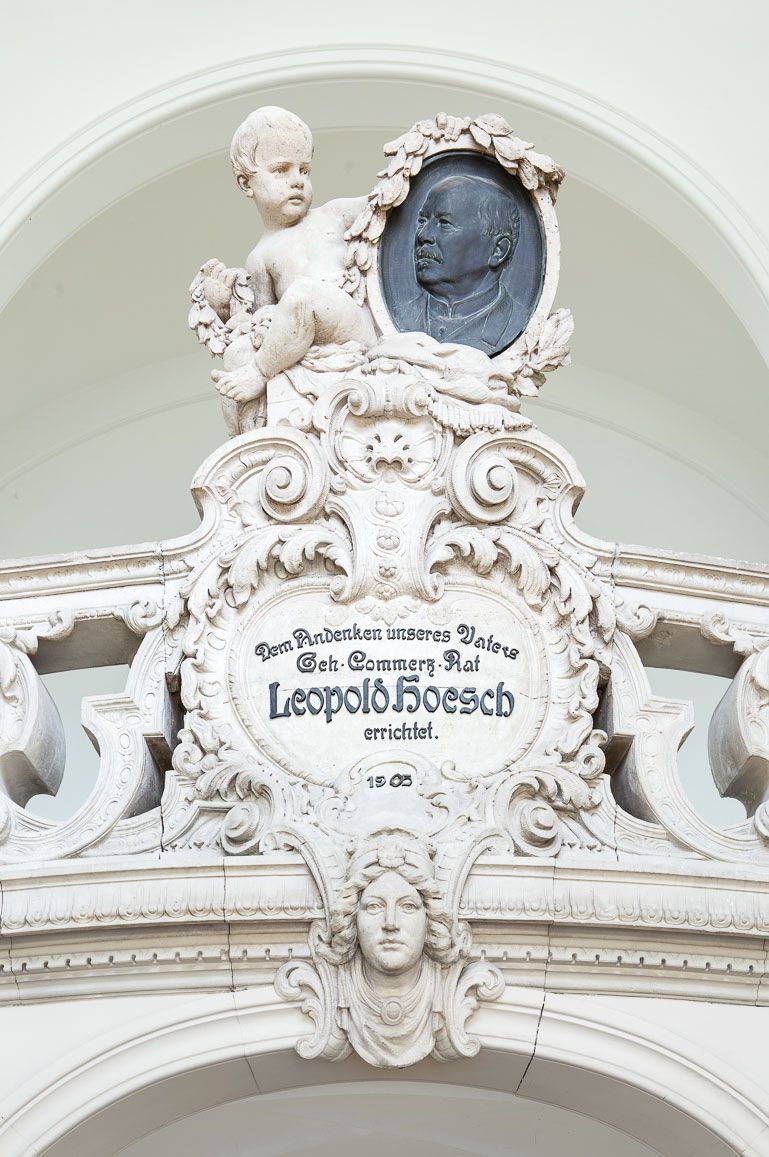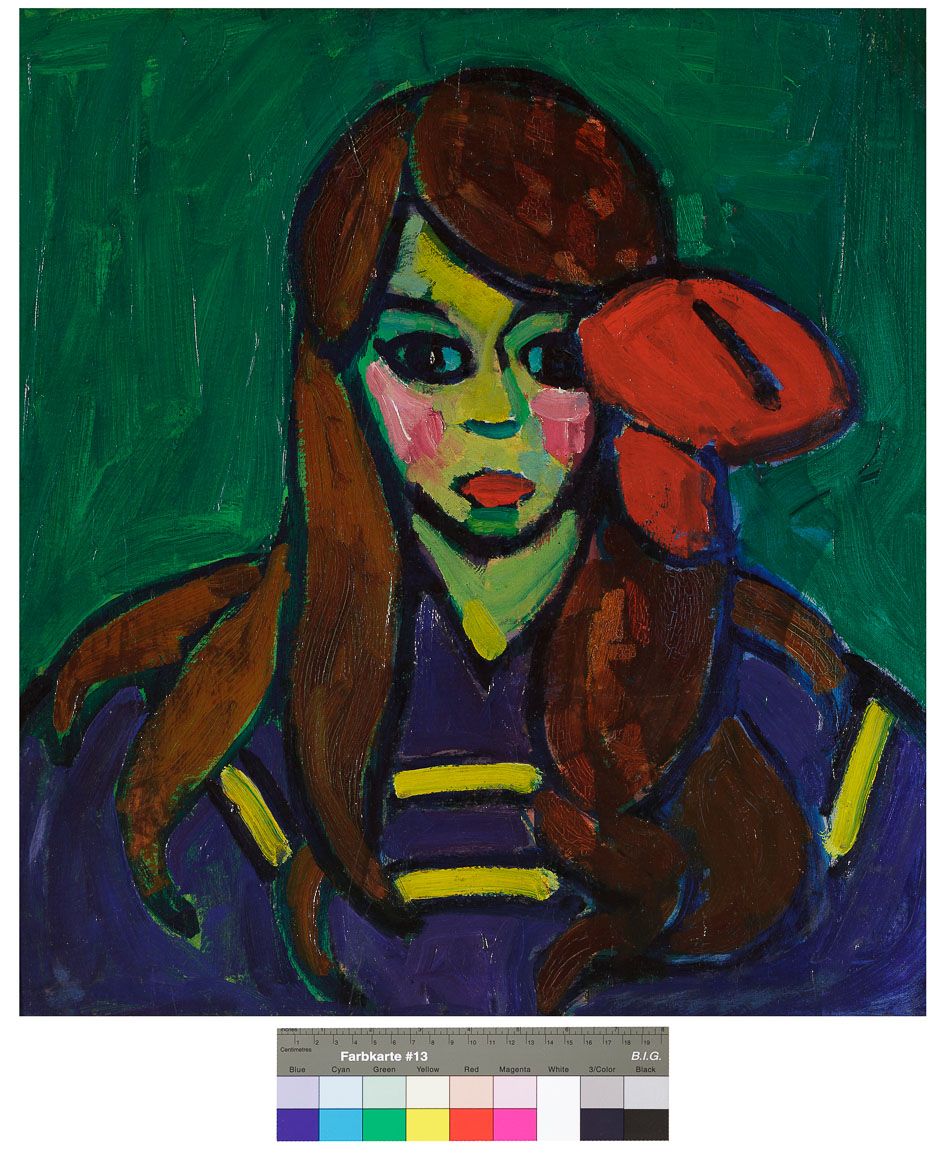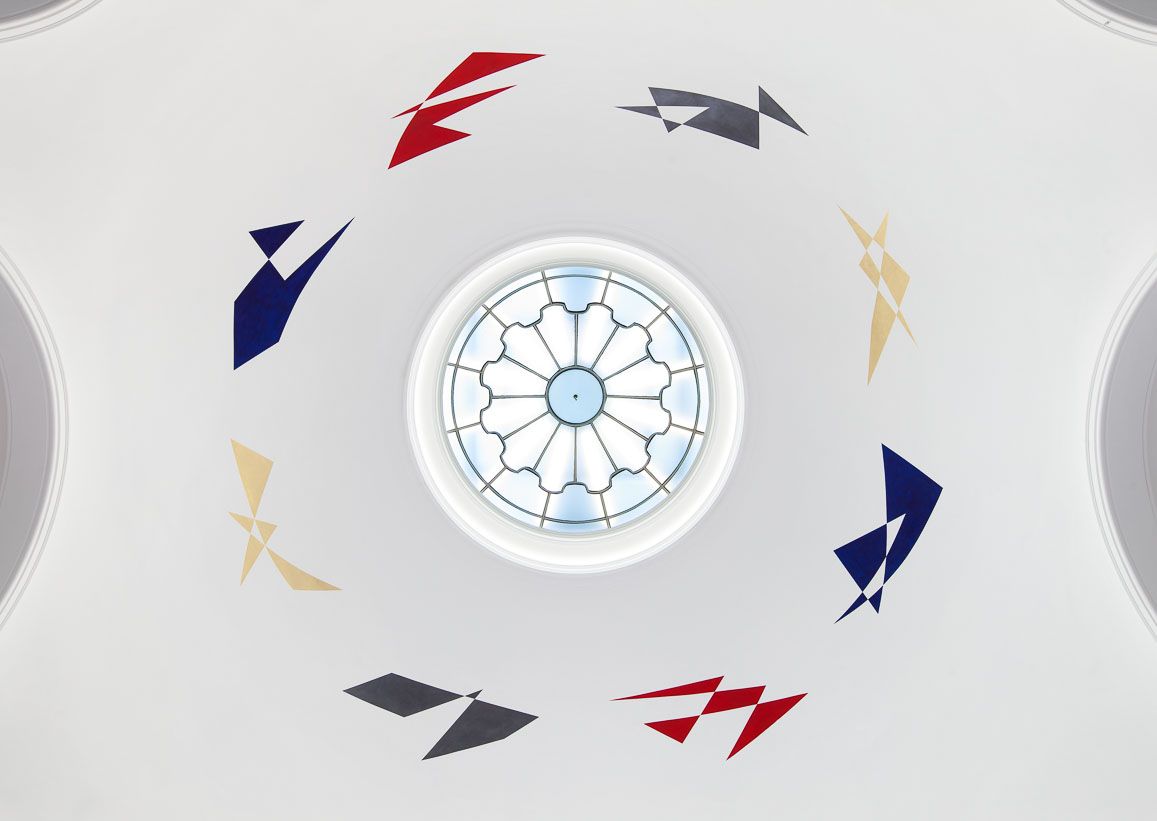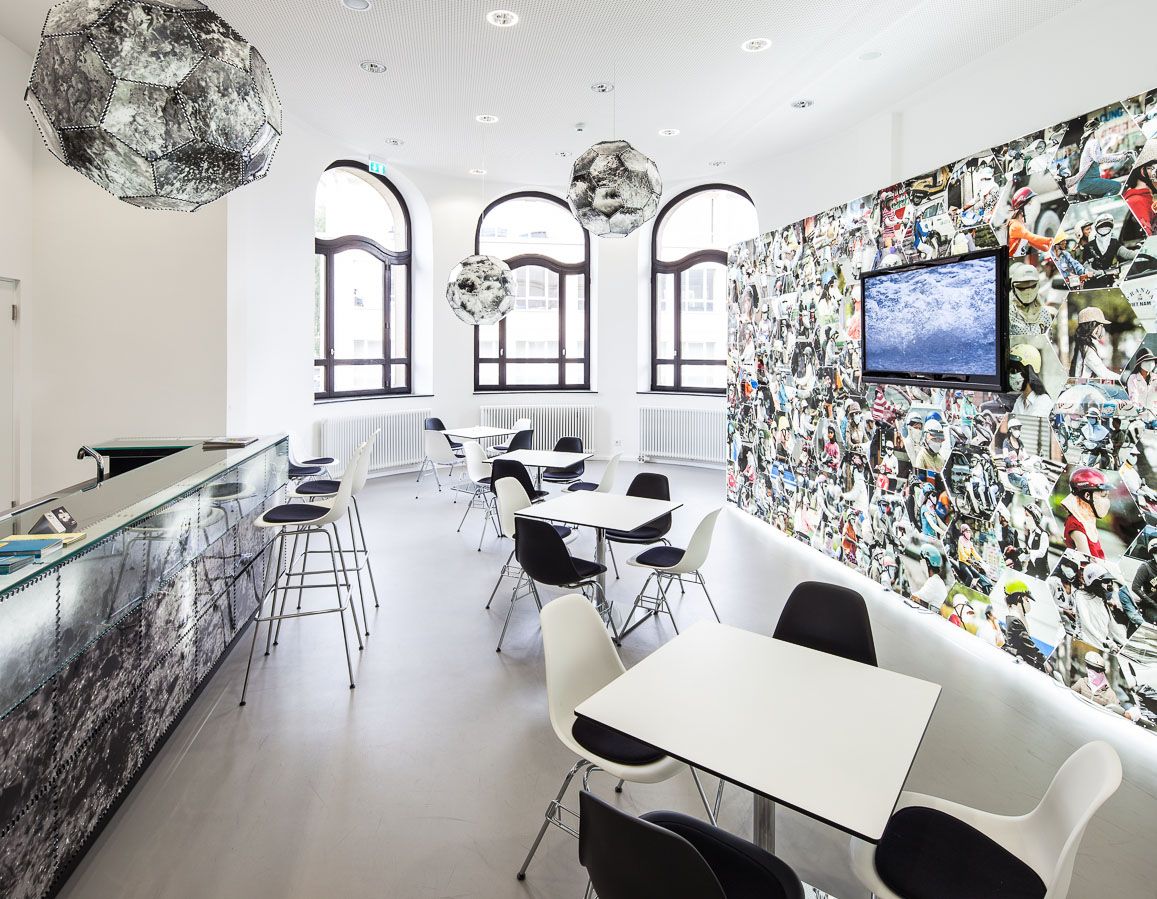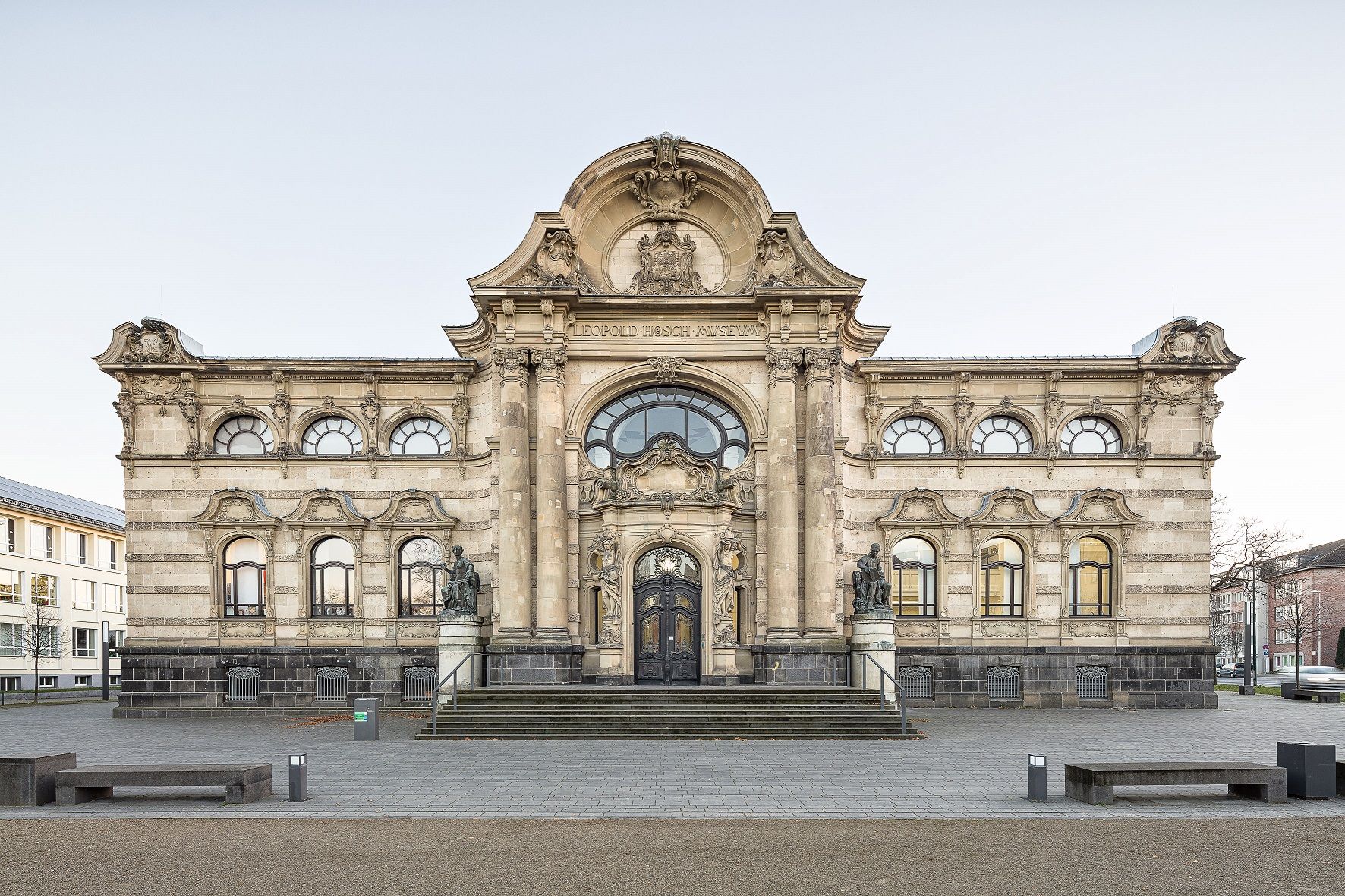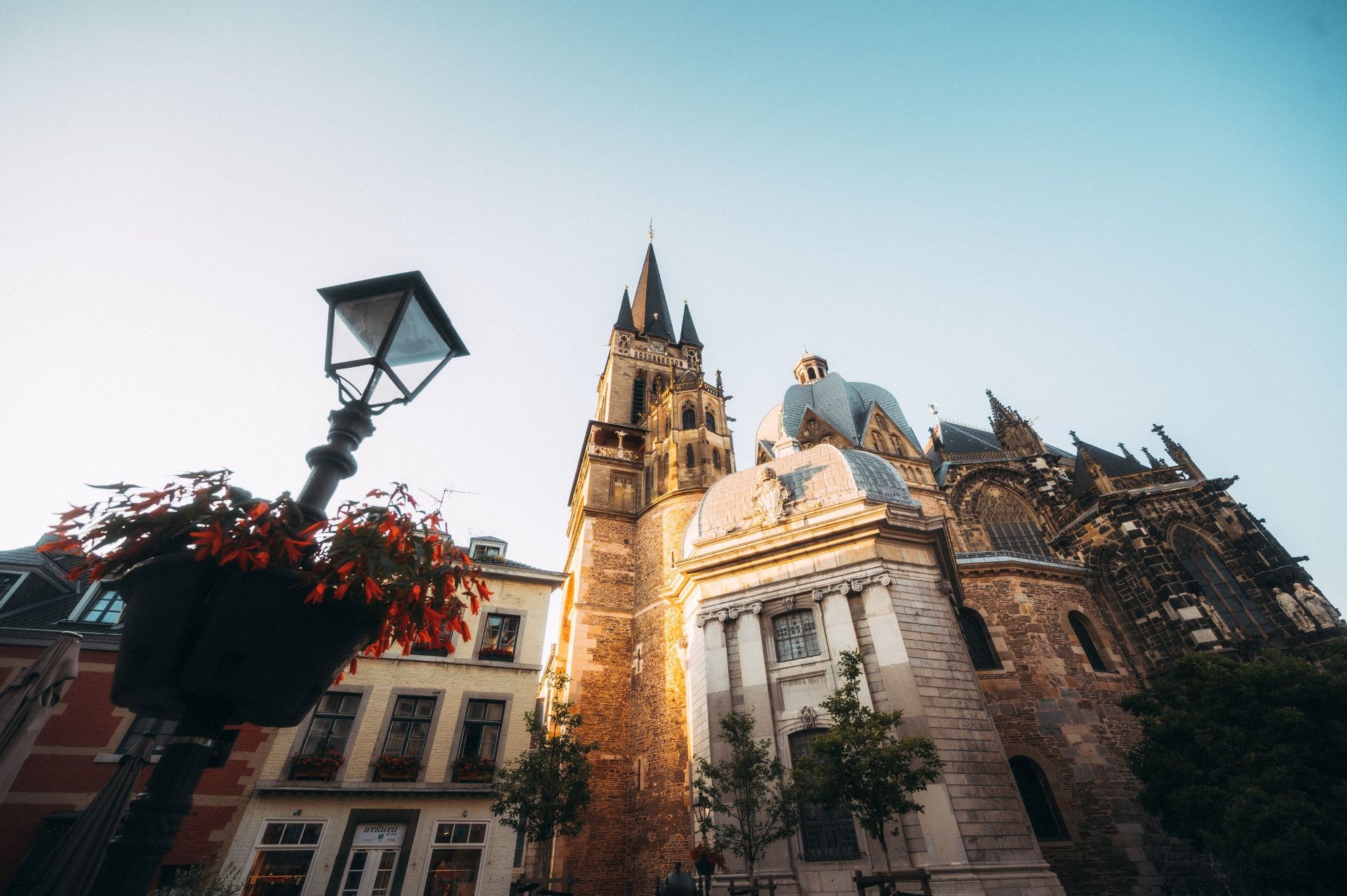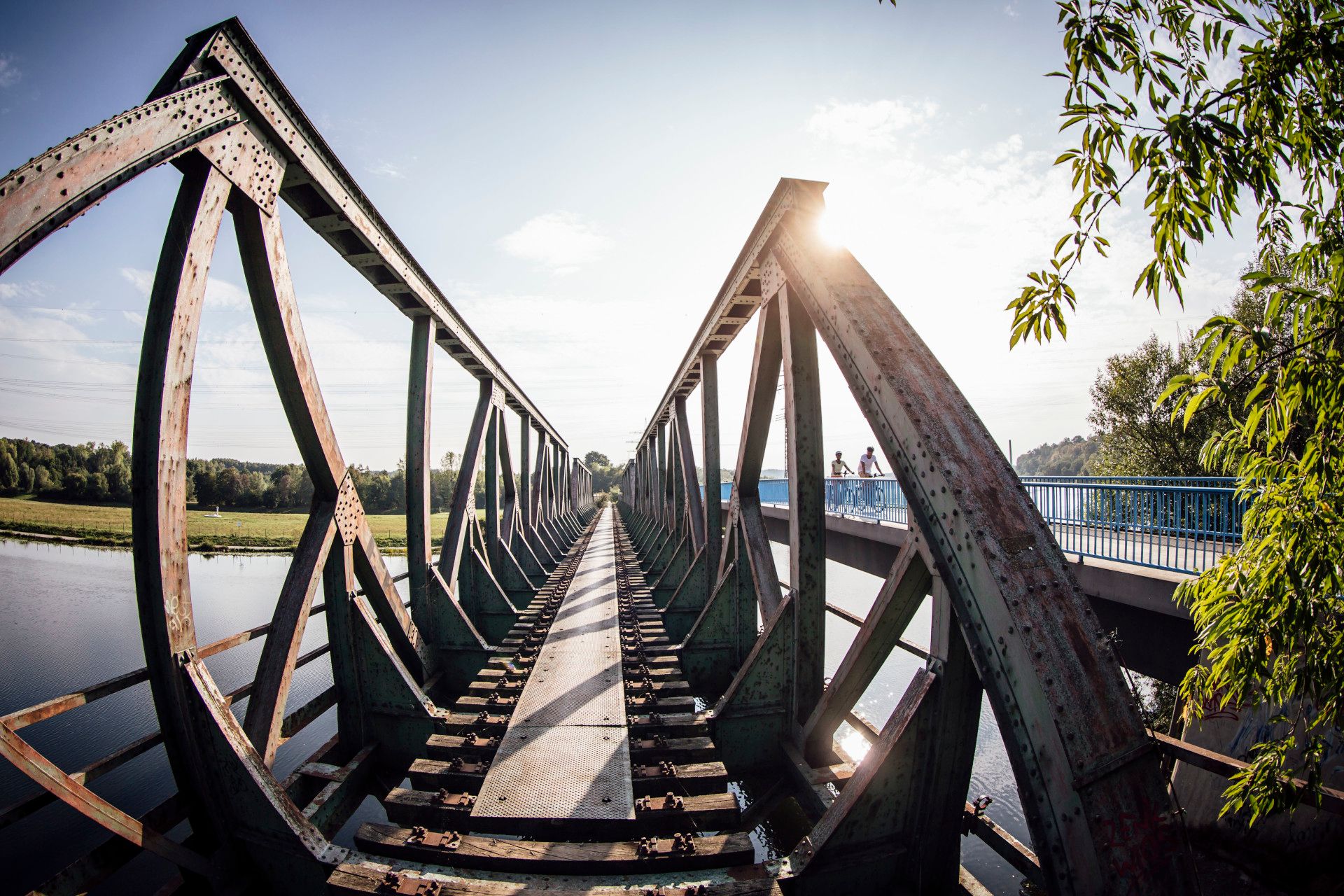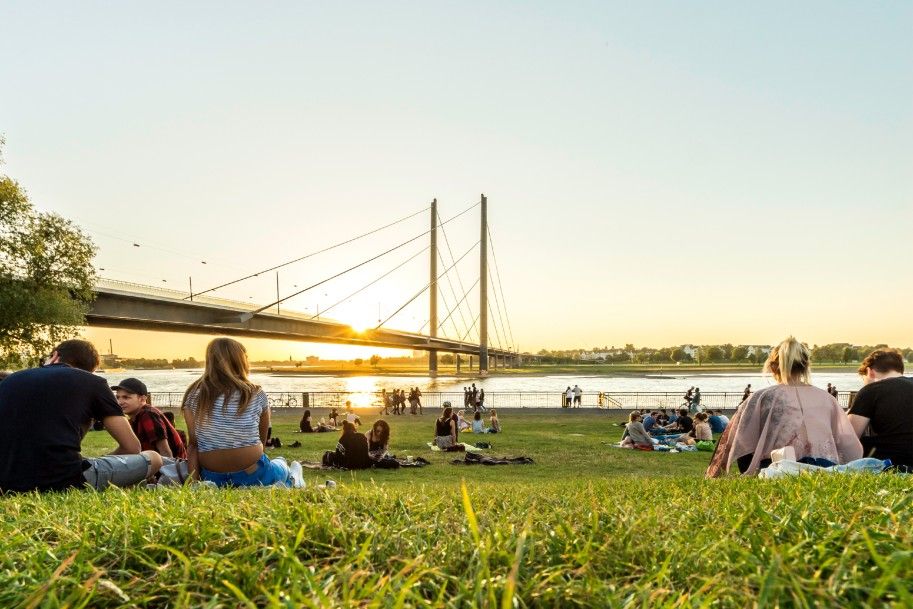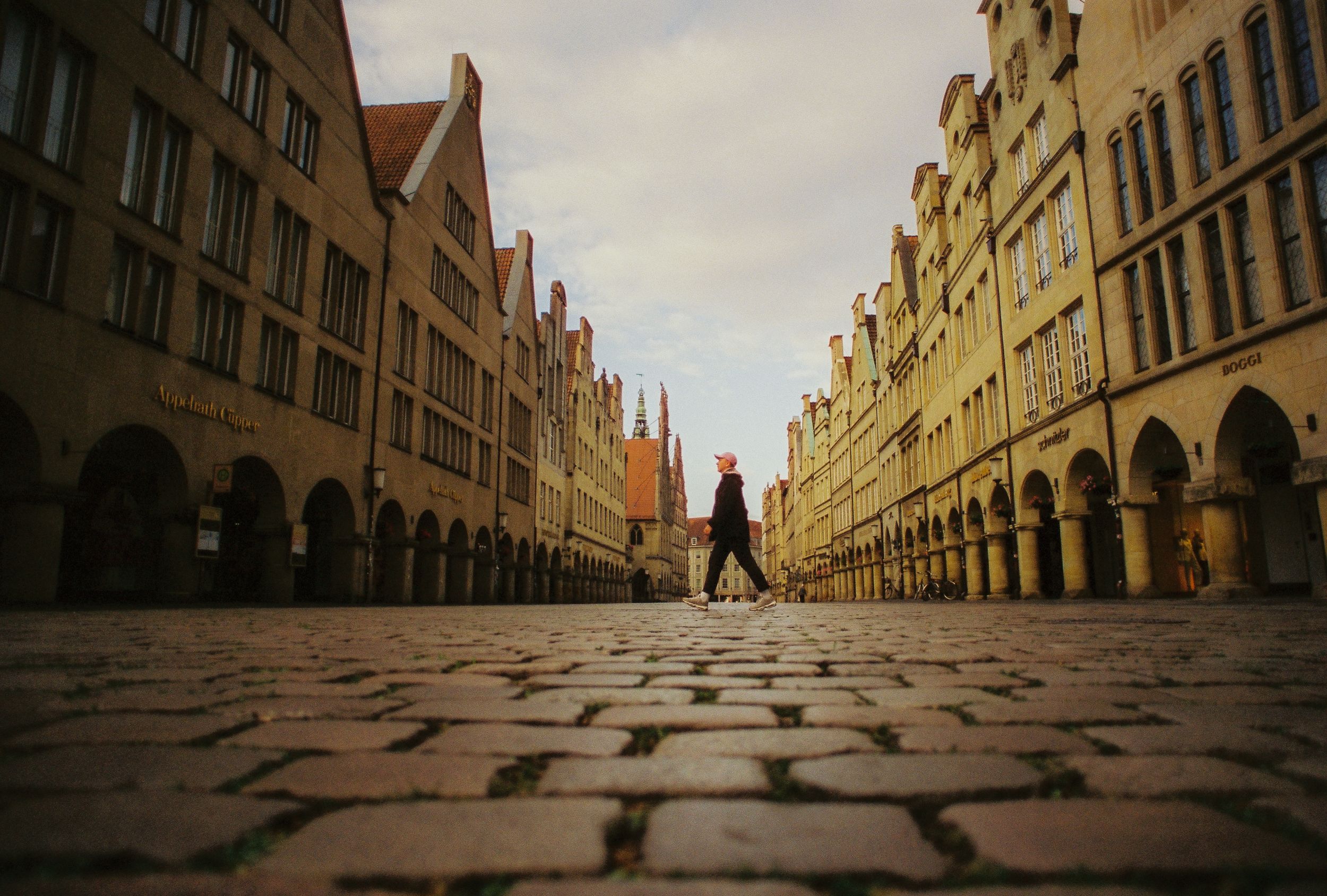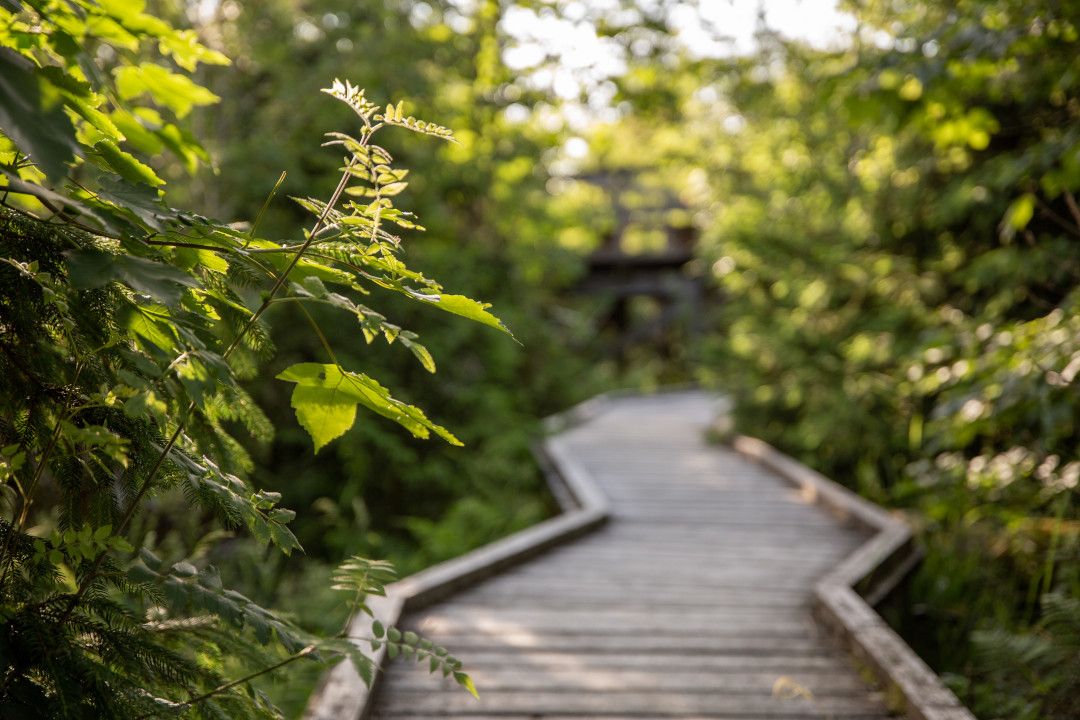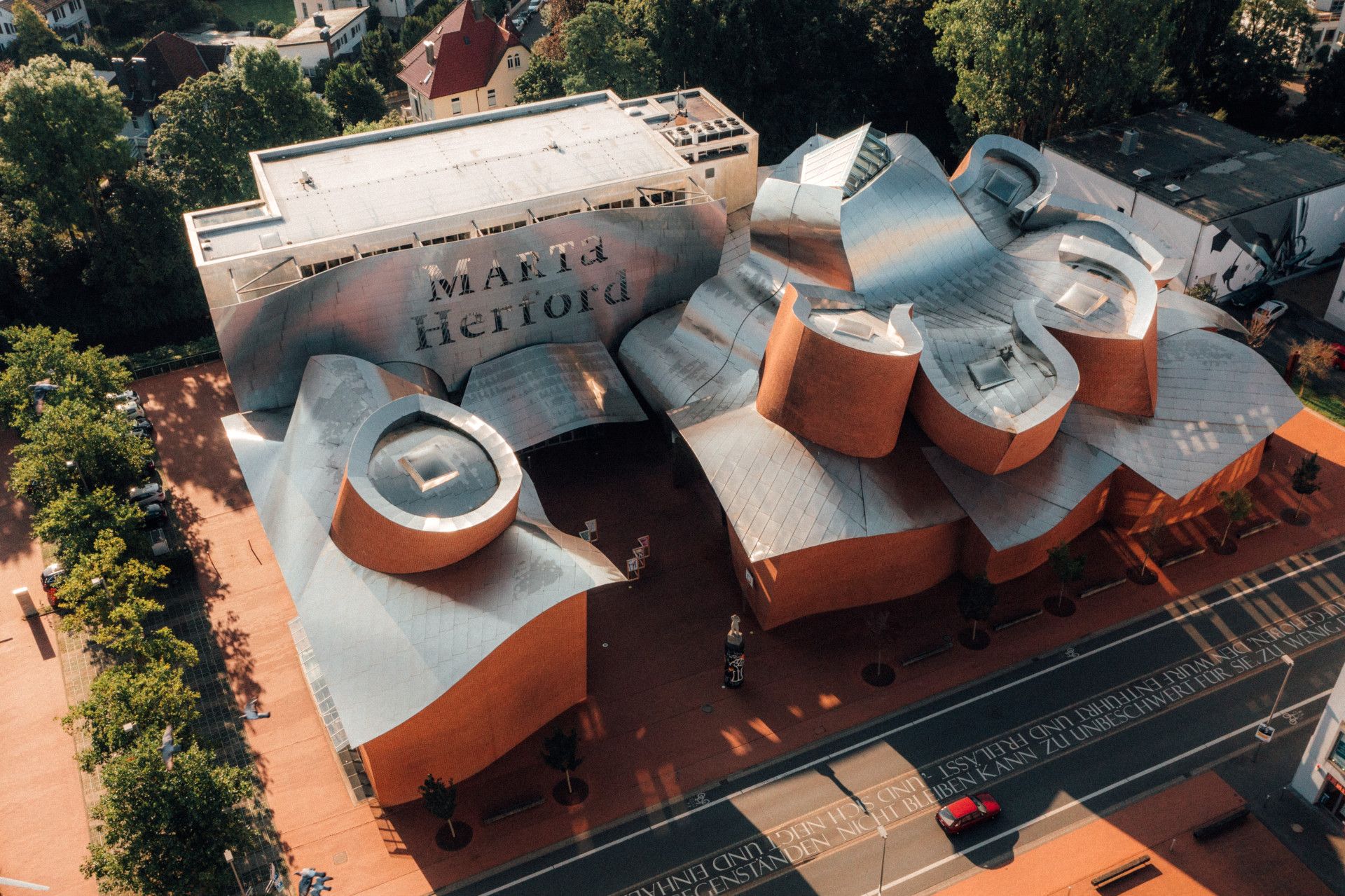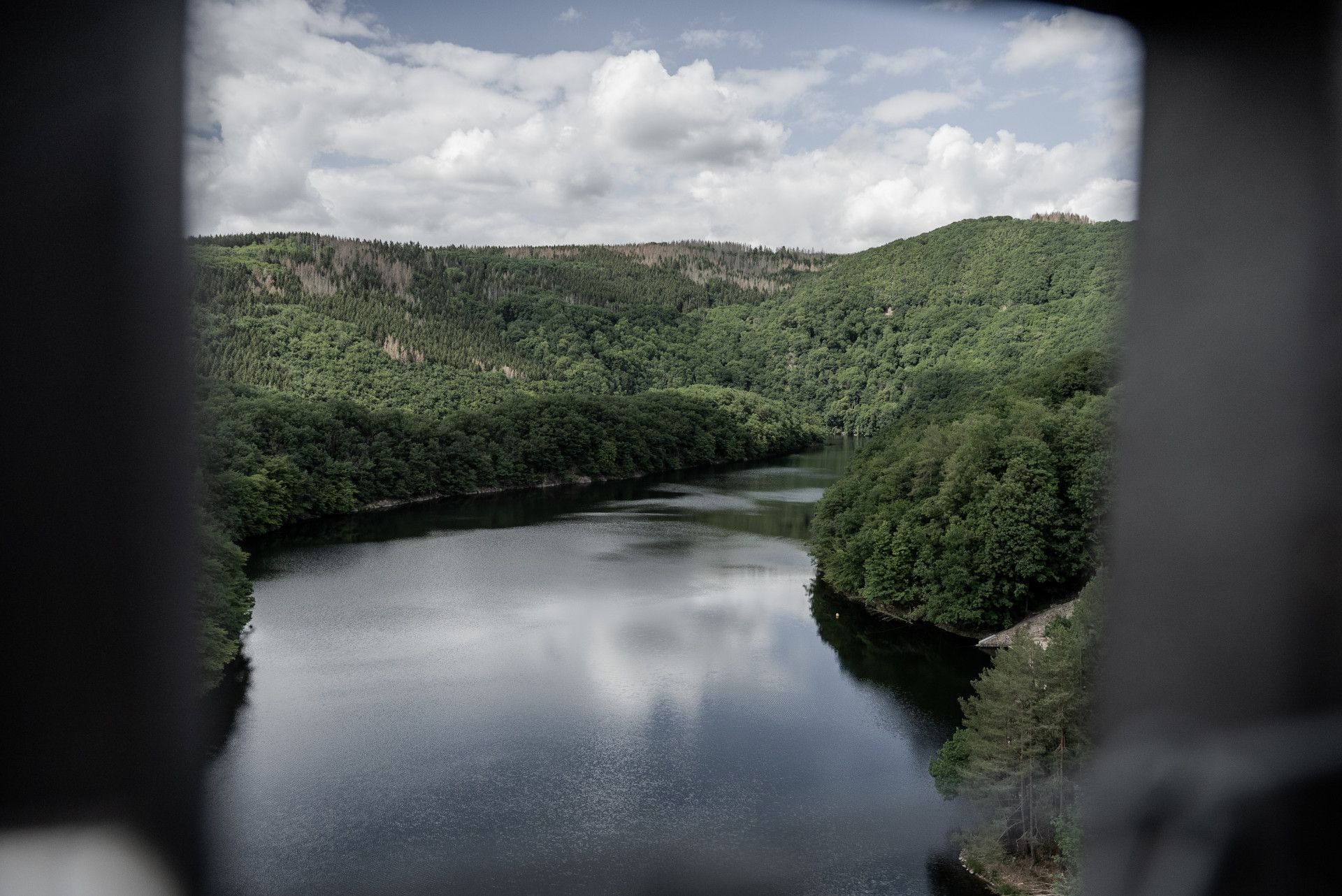Originally an umbrella factory, it was built in the neo-Austrian style of the 1920s. Umbrella assembly needed light, which the shed roofs still let through to illuminate the art hosted here today. The main hall with 1200 square metres is a playing field for Eva Birkenstock and her team. The director is hurrying across the area, always busy. One exhibition is currently being dismantled while the next one is still in the process of being set up. Signs are still missing, and something else is about to be removed. Klapheck’s great “Heldenlied” (Epos), looking a bit like a hay tedder, is going to be returned to storage soon. Magdalena Jetelová is also still working out the details of an installation made out of solid wooden beams that no longer interlock the way they are supposed to. On top of this, one of the house’s most famous treasures is staying dark. Nam June Paik’s “Earth, Moon and Sun” (1990) has stopped flickering as the dozens of CRT screens are carefully dismantled and placed in boxes, with the skeleton of the sun exposed and cables protruding from the moon and star like veins. The new thing about this is that restoration is to happen publicly, the experts working where everyone can watch them as they prepare Paik’s rare key work from the Fluxus era for the next 25 years.
To avoid any wrong ideas about this place, let us emphasise that there is plenty to see in this museum still. Aachen used to be the Ludwigs’ home and the centre of their collection of contemporary art. This is the place from where the works from the estate of Irene and Peter Ludwig travelled to 25 museums around the world. Following the end of the couple’s unrivalled passion for collection – Peter Ludwig died in 1996, Irene in 2010, both in Aachen – the Ludwig Forum remained the “motherhouse”, as Eva Birkenstock calls it. “The Ludwigs’ global interest is visible here,” she says. They acquired their art in the GDR, in the former Soviet Union, creating museums there as well as they did in Beijing, Cuba, and Hungary. They bought US Pop Art before anyone else did, and so on... That’s why this house now bears the addition “for international art”.
We are standing right in the middle of it: Robert Rauschenberg, Margit Palme, Rune Mields, and Sol Lewitt. Jasper Johns, Wolf Vostell, and Gerhard Richter’s “Permutations” (1973-74), which seem preparation for his Cologne Cathedral window, are part of the collection as well. Not only Carla Accardi’s large work in bright reddish pink looks as if it might only just have been completed. “It’s actually from 1965,” Birkenstock corrects, proving the visionary choices this exceptional Ludwig couple used to make. Their work on a visionary present is continued as Ulrike Müller, who lives in New York, is currently creating spectacular huge murals (“Monument to My Paper Body”) on the two 9 x 14 metre walls facing each other in the building’s light tower. In between, Jenny Holzer’s LED treadmills (untitled, 1991) with her Truisms running on them incessantly, are worth seeing just as much.
Work in the background is just as present. “Teaching the Archive” is the current project for programming artificial intelligence to familiarise itself with the collection of 5000 in order to be able to answer questions to the visitors’ satisfaction. Staying up to date also demands a “collection survey”, as curator Holger Otten calls it, on art from Eastern Europe that was once localised in the Soviet Union but now requires some new reflection. It almost goes without saying that another temporary exhibition is covering with sustainability and ecology. – It all seems very topical here. Nothing to be seen is superficial, and we are left marvelling at the inspiring selection from this collection.
Between all of these developments and movements, all of the abstraction and messages, between contemporary analysis and colour frenzy, the two life-sized figures of a dromedary and a camel form the Ludwig Forum’s pole of calm as they are standing stoically in place. What a sight. Nancy Graves created them. While they are in great demand all over the world, they are far too delicate to travel and will probably stay right where they are for some time to come. If you are following the RE1 tour that is now coming to an end, please give them our regards!

